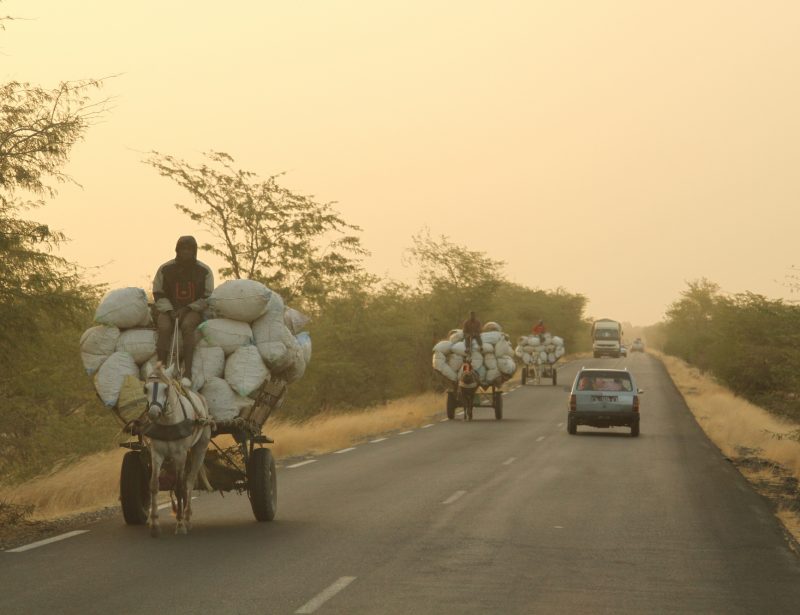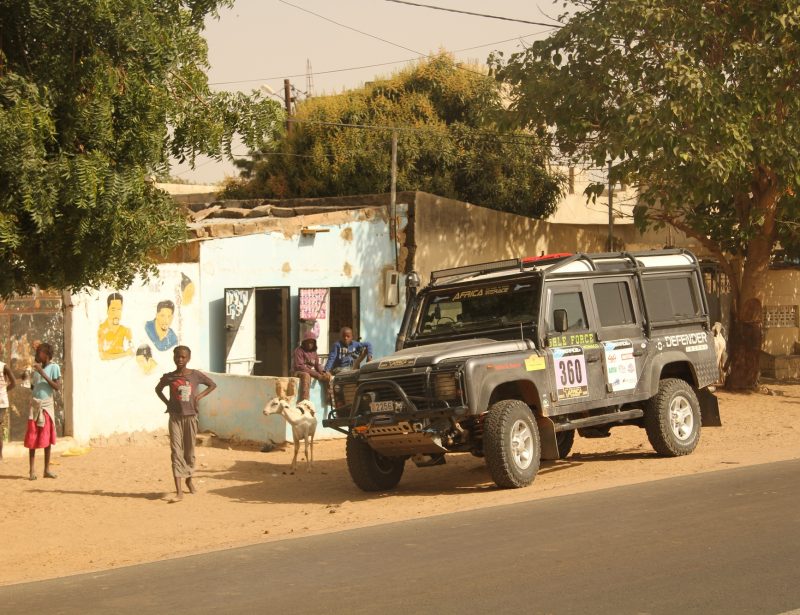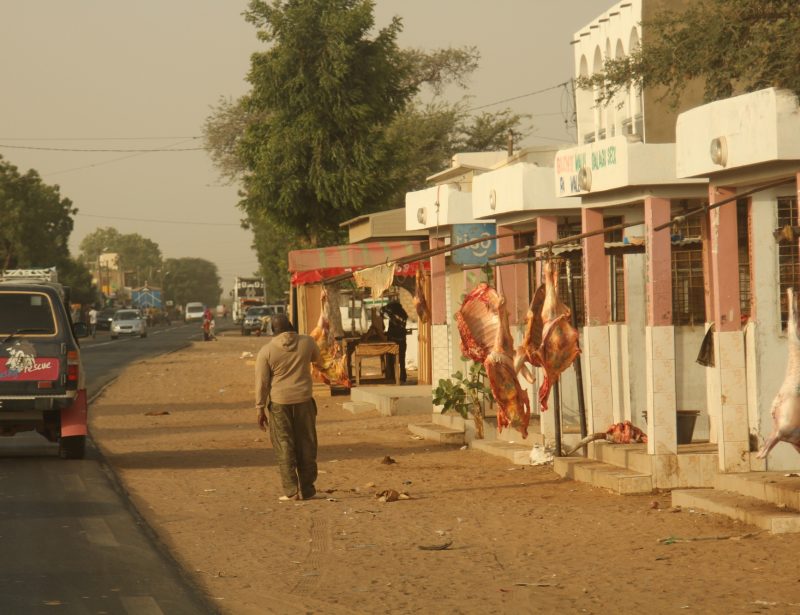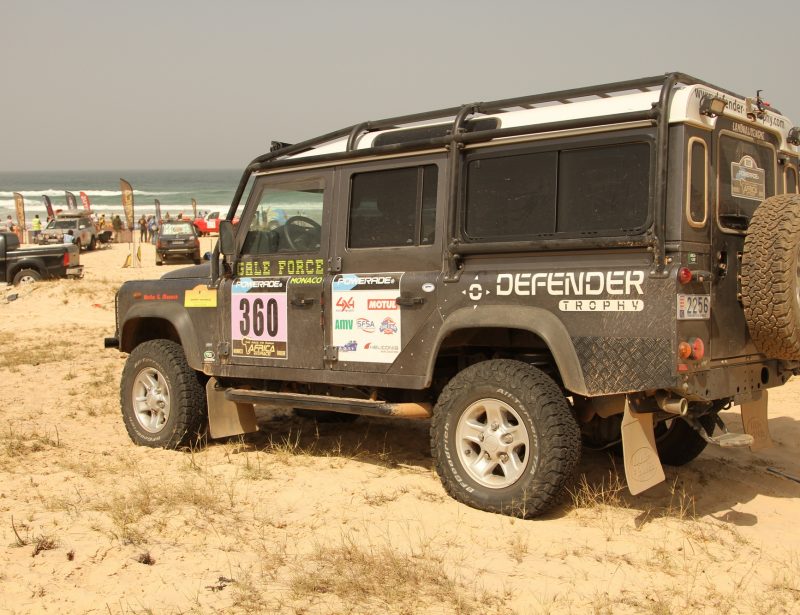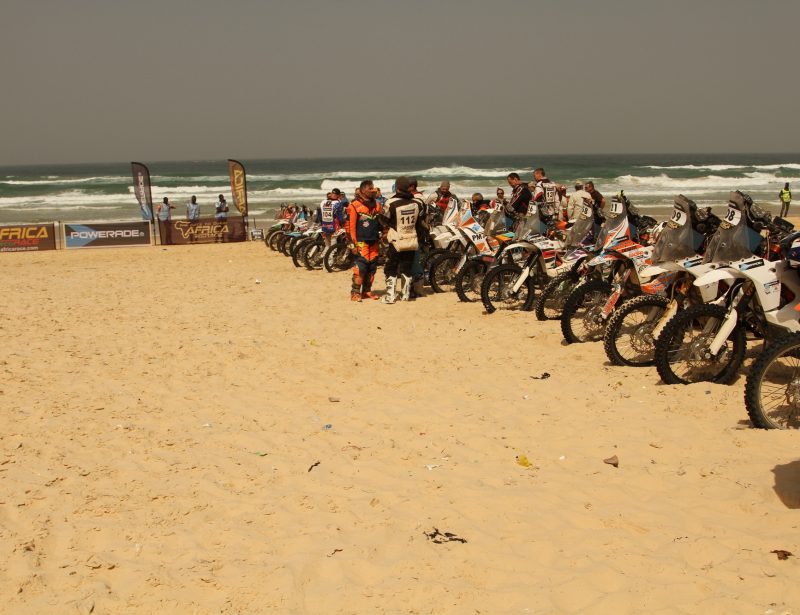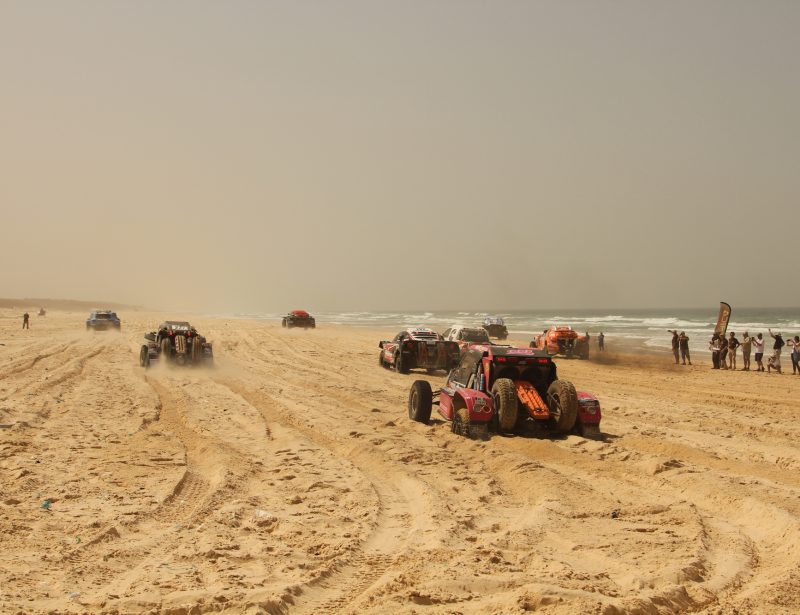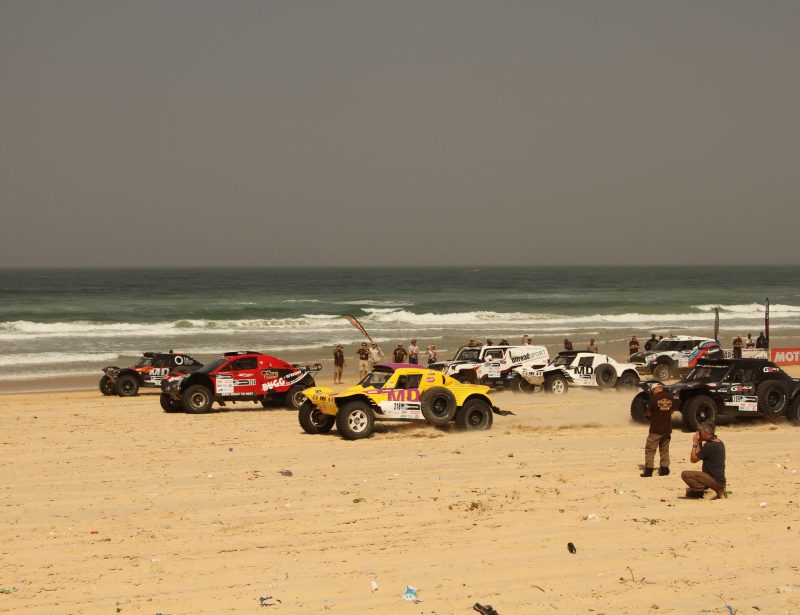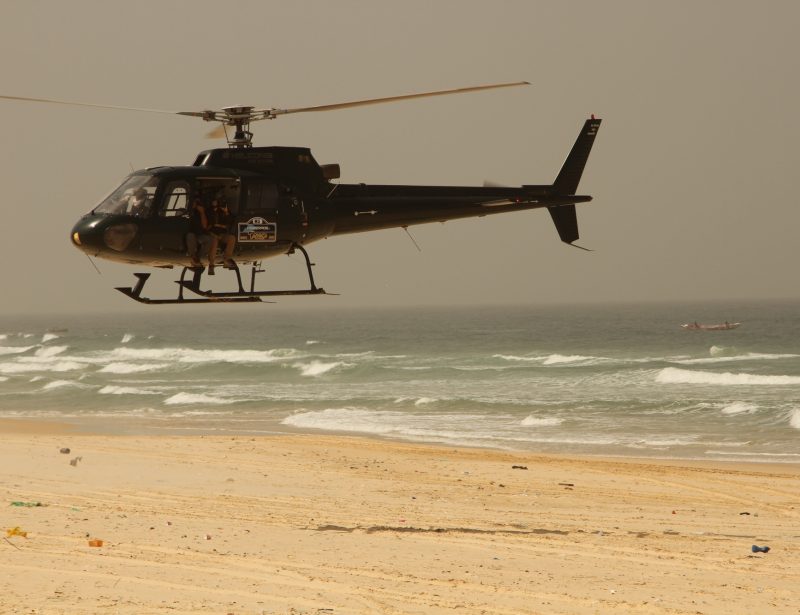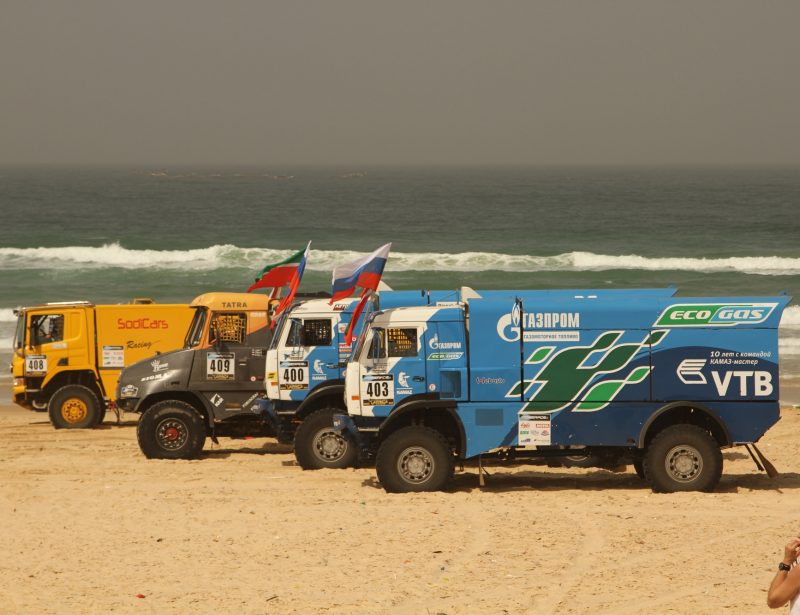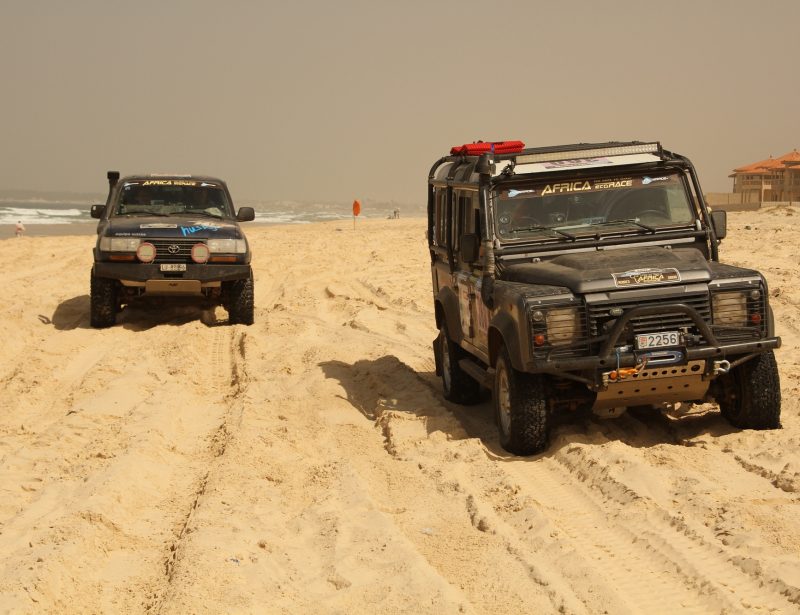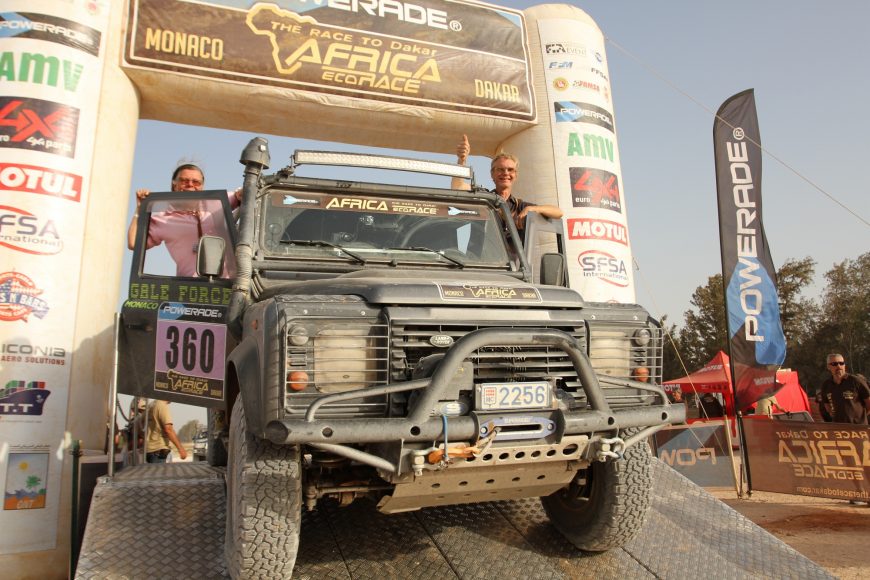
This is the story of how we went from zero 4×4 experience to completing the 6,500km off road Africa Eco Race RAID in1 year. I originally wrote this story in 2019 for a British Land Rover magazine but it was never published. Today it ends its time sitting on my unused stories pile.
My wife Penny and I have always been fascinated by the Paris-Dakar desert rally. Having watched many video clips over the years we always looked at each other afterwards and promised ourselves that when we retired we would give it a go. In reality we had no 4×4 car nor had we ever driven off road so this was some serious dreaming.
Well in 2015 we did retire and suddenly had no more excuses. Was it actually possible? Could two retired beginners actually tackle the famous course. Well by then the Paris-Dakar had become the Dakar and was raced by mostly professional teams in the deserts of South America. Luckily in 2009 a new France to Dakar rally, the Africa Eco Race, had been created to allow adventurers to follow in the spirit of Thierry Sabine the founder of the original Paris Dakar. Our subsequent research revealed that racing the full 6,500km course was really tough on any vehicle. To ensure a finish a supply of spares would be needed plus a vehicle to carry them and generally a support crew to fit them. Even though we had a good budget and this was also my 60th birthday present from my wife, it would not stretch that far.
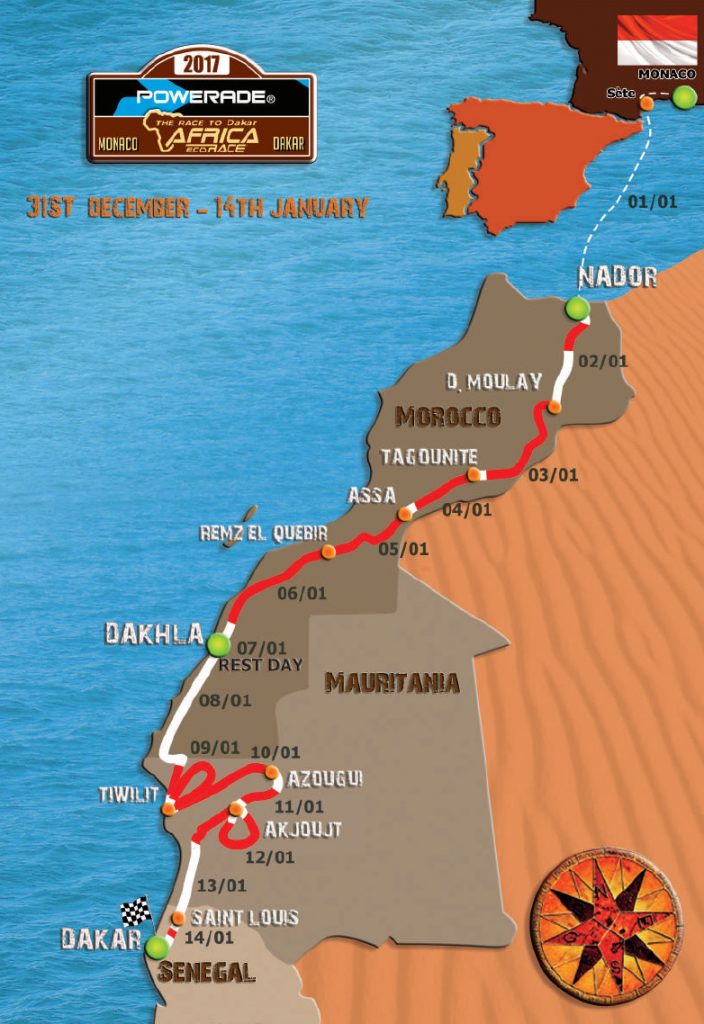
The Eco Race website also offered participation in a RAID category. This was described as a way to follow the race, experience the territory and the lifestyle without the stress of actually racing. This sounded like it was achievable. All we needed was a 4×4.
With 10 months to go before the start we bought a beautiful city based 2013 Land Rover Defender 110. The car, like us, had never been off road. It was 100% standard, fully carpeted, air conditioned and with 3 rows of seats. Queue A-Team music overplayed by the sounds of drilling and hammering. . . .
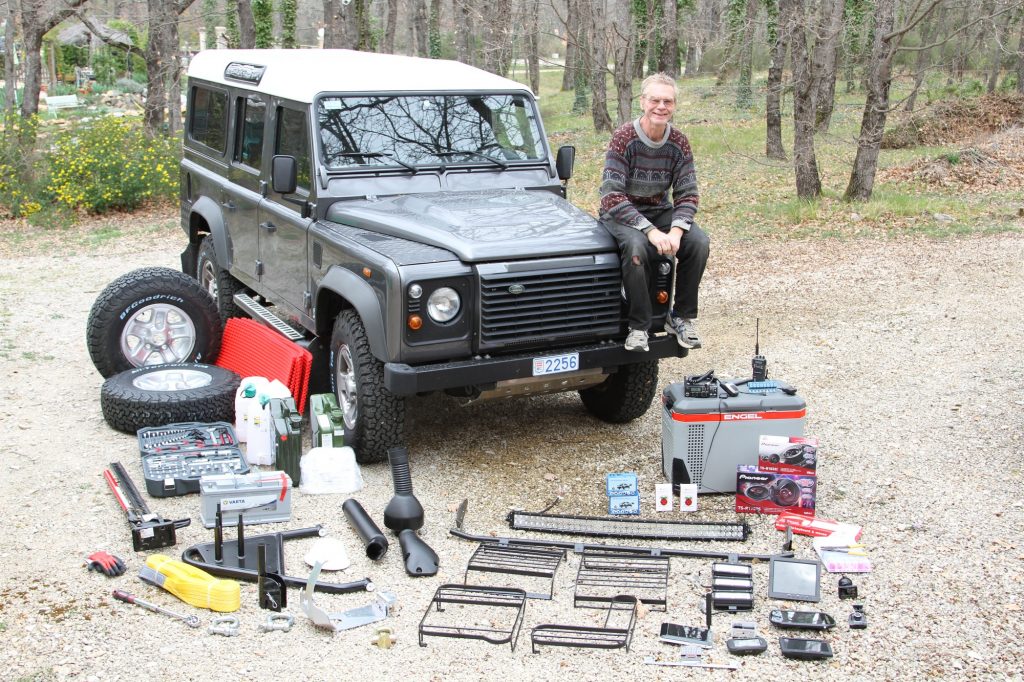
A couple of months later we went to Morocco with the Defender Trophy event so we could practise a little. You can see some of my Photos and Videos HERE.
Defender Modification
For the technically minded I started with a standard 2013 Defender 110 TDCi then added:
External:
- Full roll cage
- Under body rock protector plates (steering, gearbox, front and rear differentials)
- Heavy duty +1 inch springs and Koni Grand RAID shocks
- Enormous LED front light bar
- Safari front bumper with winch
- 6 BFGoodrich TA offroad tyres
- Raised air intake (Snorkel)
- Headlight protectors
- LED work lights at the back
- Reversing camera (permanently live to a screen as the rear view mirror)
- Heavy duty spare wheel carrier
- Aerials for Eco Race satellite safety gear plus 3G plus CB radio
- Tyre Pressure monitoring system
Internal:
- Removed all seats except for the drivers
- Raptor 4×4 seat with full harness for co driver
- Wooden structures in the back for storage and base for a double air bed
- Fridge
- Second battery
- Hilift jack
- Kraftwerk tool kit
- Containers for 20L water and 40L of diesel
- Bolted in Compressor with custom wireless remote control
- Tent & camping gear
- Assorted Spare parts
- Electronics: Terratrip, Inreach, Garmin GPS, USB power, CB radio, 220v, 7″ LCD screen, 3G based wifi
I could not bring myself to make holes in the beautiful plastic dash board so I built an aluminum exoskeleton that uses existing holes to mount everything. Between the two seats I built a control panel for the CB radio and all the switches.
Paperwork
At the end of December 2016 we arrived at the Eco Race car park in Menton, near the Italian border, in the South of France. Our adventure was starting. The first day was all about the paperwork, collecting our wrist bands and food passes, installing the Eco Race Iritrack / ERTF GPS systems and applying all the event stickers. Without even leaving the car park our Defender was now looking like a real rally beast. That actual day was my 60th birthday which was made even more special by the organisers assigning us the race number 360, the 3 designating us as in the RAID category. Having completed everything we drove to the “parc fermé” in Monaco and parked alongside some of the most amazing off road cars, bikes and trucks you have ever seen.
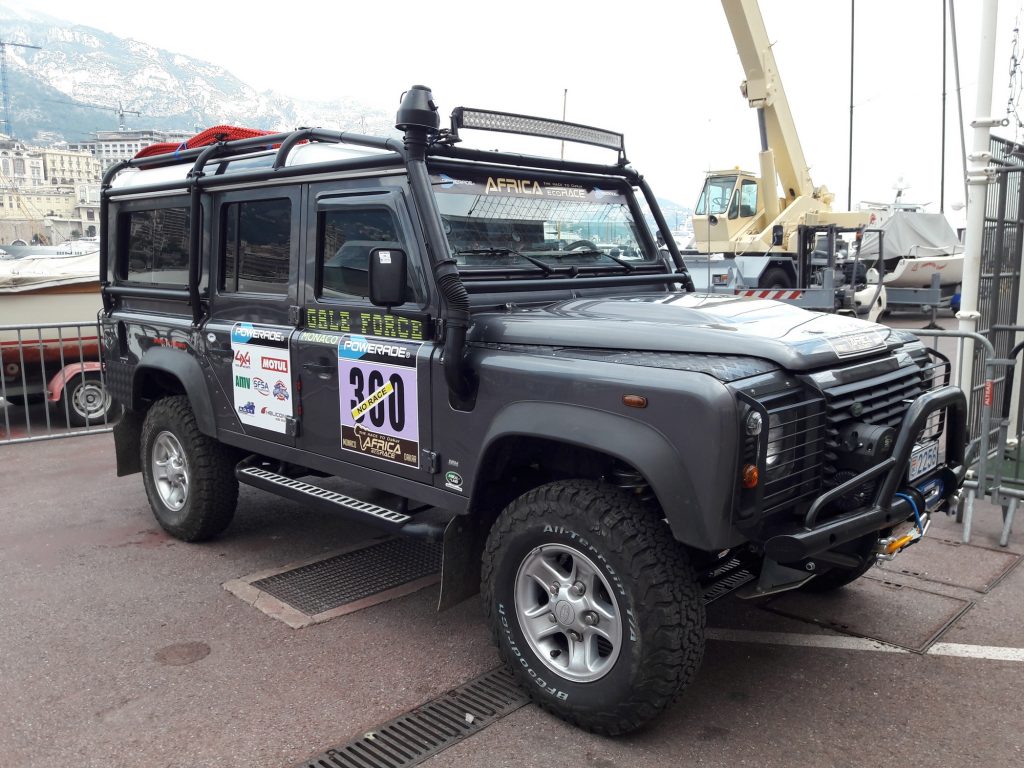
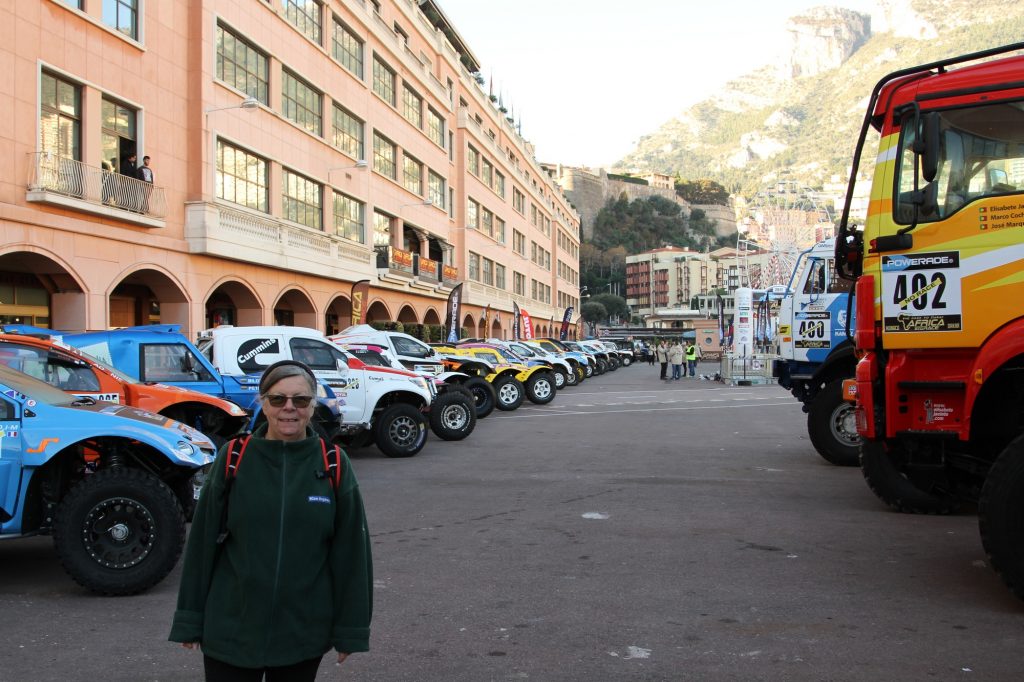
Day 1: Monaco to Sete
The ceremonial start of the race was held the next day, 31st December 2016, on the quay side in Monaco. Over the next 2 hours 36 bikes, 43 cars, 9 trucks and finally the 9 RAID entrants all passed noisily through the official starting gate. Crowds of people cheered as each entrant was introduced and set on their way under the chequered flag. This was amazing. We were living the dream.
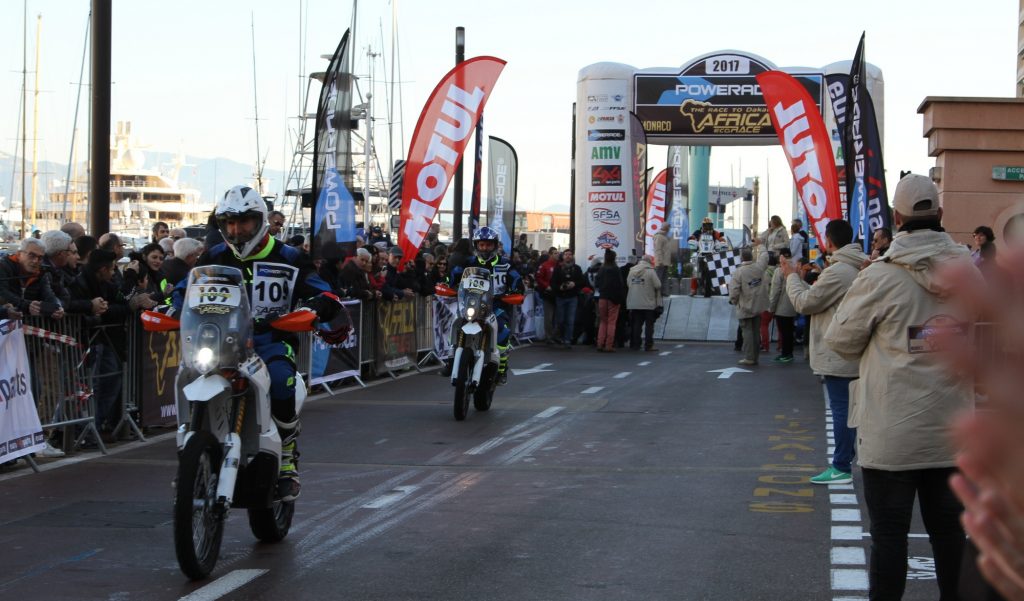
This really was just a ceremonial start though. After leaving the crowds behind we began a 400km gentle drive along the motorways of the south coast of France to the ferry at Sete. By early evening the entire race was safely onboard and somewhere in the Mediterranean. The Russian team installed their huge Christmas tree in the lounge and the party was starting. This was New Year’s Eve 2016.
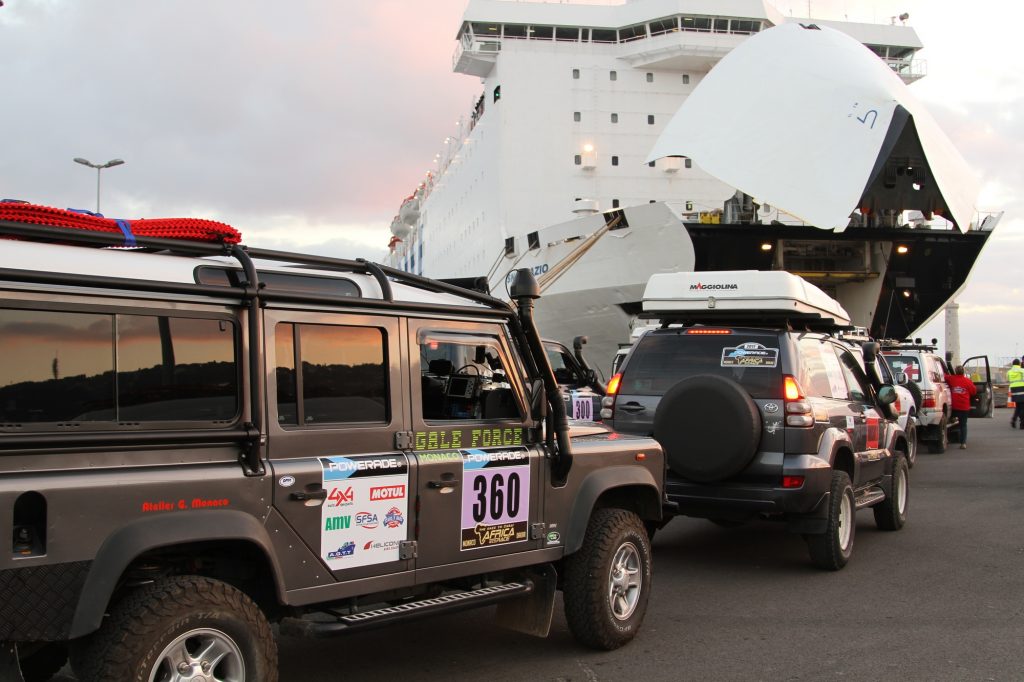
Day 2: New Year
Most people skipped the next morning afloat. In the afternoon we were half way to Morocco and the meetings began. First there was a general welcome to the race and introductions by the key people in the organisation, course control, medical and media departments. Then we had our own RAID group briefing to meet the RAID organisers, the other teams and to receive the first day’s Road Book. Finally there were training courses for the Iritrack and ERTF GPS systems.
The photo below was taken at one of the onboard team briefing. Sitting at the far left (from your side) of the table is our son, Chris. He has worked with the Africa Eco Race for many many years as part of the organisation.
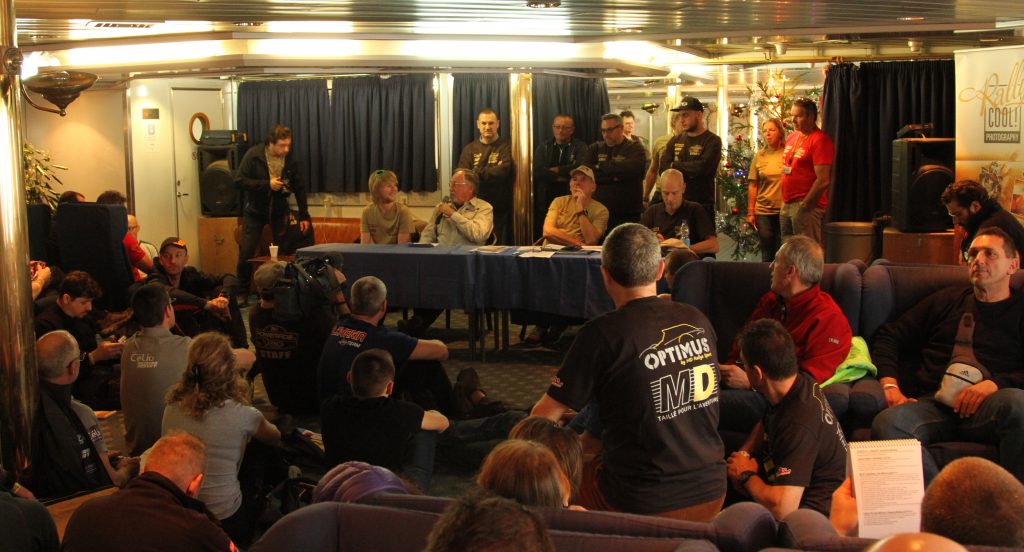
Briefly the Iritrack is a hands free satellite phone that allows us to talk with Race Control. It will connect automatically if it detects the vehicle has crashed. It provides continuous GPS information so that Race Control always know exactly where we are. All the navigation is done by Road Books however the ERTF GPS does contain hints should one become totally lost. If a racer has to access these hints they will incur a time penalty. The ERTF also includes the Sentinel safety system that warns you if someone behind wants to overtake or you are coming close to a slow or stopped vehicle.
The Road Book is a most amazing piece of work. There is one for each stage/day detailing the exact route we must follow. As you can see below it comprises of hundreds of little junction drawings plus some helpful numbers. Too complicated to go into here but suffice to say they have a little symbol for each type of navigation feature you will ever encounter on the drive from Monaco to Dakar. As I said earlier – an amazing piece of work.
The Road Books are handed out the evening before each stage usually at the same time as a briefing to discuss the stage and cover any changes that have to be made to the book. The navigator’s job is then to go through all the little pictures and highlight the actual route we will be taking. This is an important job which makes it easier to follow the route when bouncing around at speed.
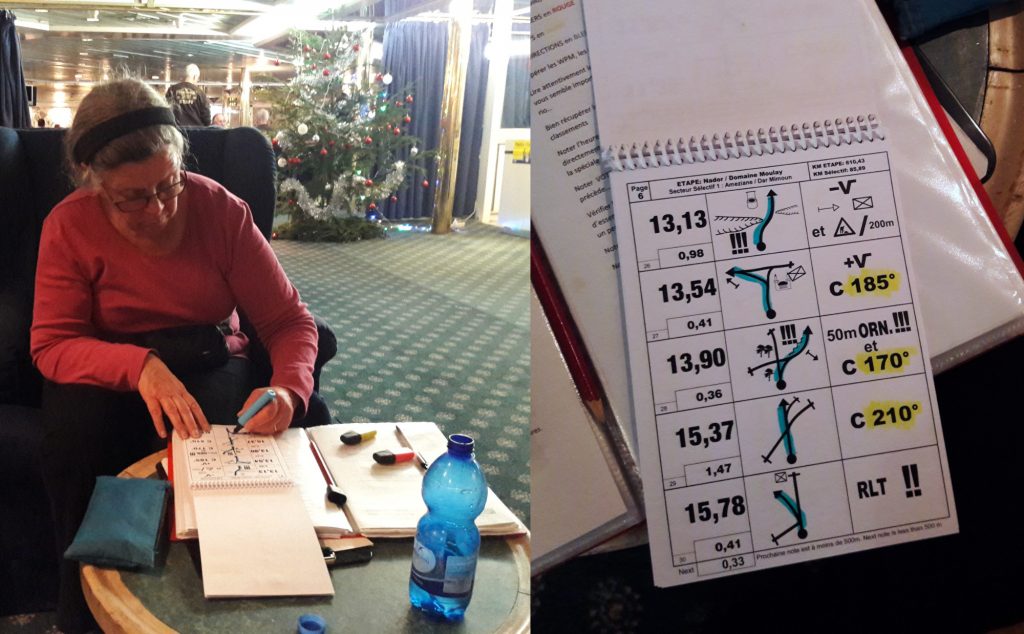
SIDE NOTE: The photo below shows Penny’s (the Navigator) side of our Defender. Along with the required equipment I had also installed: a Dashcam for recording our track and making videos, a Garmin GPS with Morocco map, an InReach Satcom, a tyre pressure monitoring system (which came in very useful when we had a flat), a TerraTrip Rally Computer which accurately measures distance traveled, a phone (with Morocco SIM card) and a PC Screen connected to a Raspberry Pi micro computer. The Pi wasn’t much use for the Africa Eco Race but was invaluable for the Carta Rallye that we entered later in the year. By then I had written software to simulate the brilliant ERTF device.
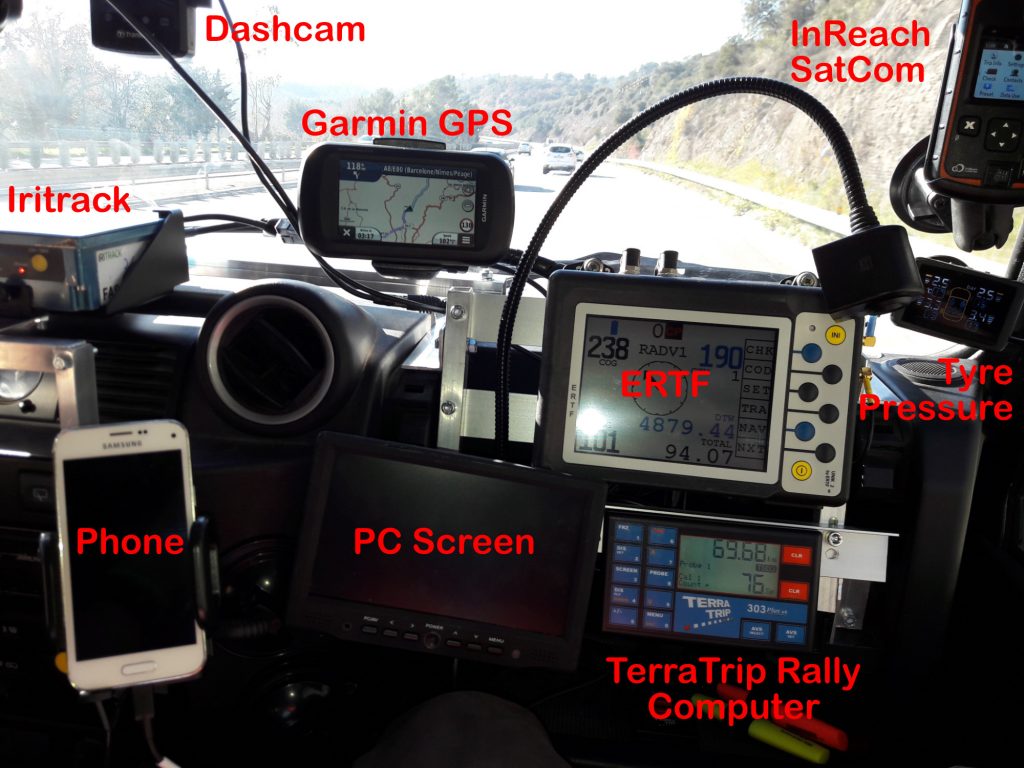
Day 3: Morocco – Stage 1
The next day started really early. By 7am we were off the ferry at Nador, through customs and tucking into an impressive buffet breakfast in a big open tent on the port. It was still dark. All over the enormous car park team trucks and race cars organised themselves ready for the drive to the first race stage. We found the RAID group, collected our packed lunches then started following our Road Book for the 50km drive to the start of the first stage.
The route took us due south along good quality roads with very little traffic. The final km was up a gravel track to an open area in what looked like an old quarry. We parked with the other RAID cars next to the Eco Race starting arch. On the other side of the quarry the medical and media helicopters were parked along with an assortment of organisation 4×4’s. Once all the RAIDers had arrived we set off in convoy along the 86km stage. We were in the agricultural north of Morocco so I would class the stage as rocky farm tracks. After 20 minutes we pulled off the stage and parked in a row on the top of a small hill overlooking the track. Out came the chairs, coffee and cameras as we waited for the first bikes to race pass. They start at 1 minute intervals so we had plenty of time to watch. There was then a 5 minute break before the cars and trucks so we took the time to move further up the stage, keeping off the actual track as much as possible. Having seen all the racers go by we drove to the end of the stage and rejoined the road system. We then had a 470km drive south following our Road Book to the first bivouac.
See the video below for a full resume of the trip from Monaco to Bivouac 1.
After many hours of driving it was totally surreal pulling off the road in the pitch black (no street lights here) and heading cross country for a couple of km’s towards a field of lights. It was 10pm and we were about 10km north of Erfoud and 40km west of the border with Algeria. As we passed the outer ring of military vehicles (security by the Moroccan army) the size of the event started to dawn on us. Everywhere there were massive service trucks with generators and lights blazing while teams of mechanics worked away on cars and bikes in various states.
After some circling we finally found the catering tents, parked and went to investigate our first bivouac. In an area the size of three tennis courts the open bivouac tents were organised in a U shape. At the end was catering and the food while on each side were tables and chairs with people eating. In the center was an open bonfire providing some heat as the temperature was a little over freezing. We met up with the other RAID people, collected our Road Book for the next day then queued up for food. Having eaten we moved our Defender to an area of the camp away from most of the generators and organised ourselves for our very first night sleeping in the car. No we had not actually tried it before!
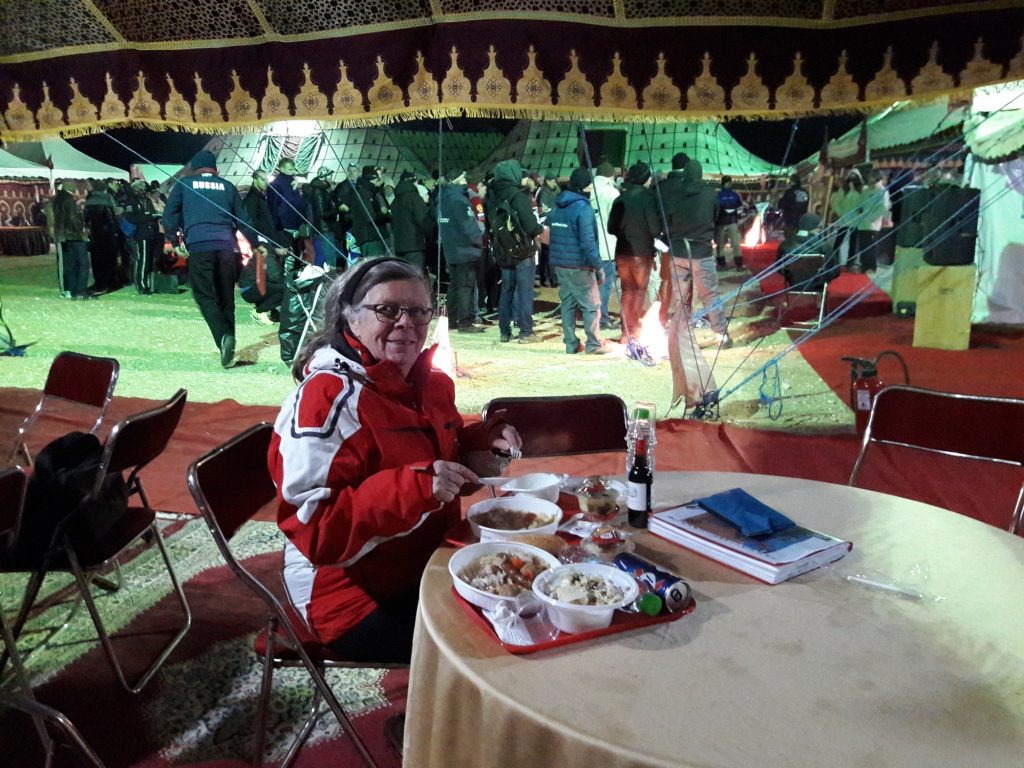
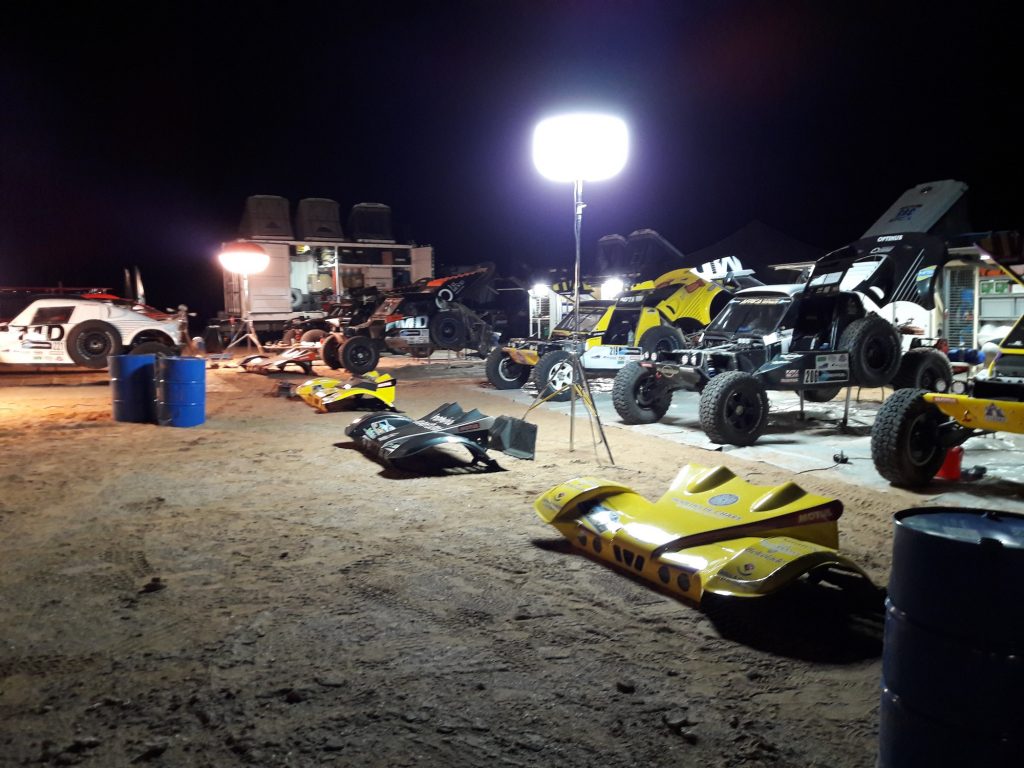
Day 4: Morocco – Stage 2
The next morning it was really cold as we sat in our ski jackets in the open catering tents eating breakfast. The night in the Defender had been brilliant – very pleased with our system especially as the outside of the car was covered in ice the next morning whilst we had not been overly cold inside. For the racers today’s 370km stage started from the bivouac and ended with 23km of road to bivouac 2 near Tagounite. At 8am our RAID party took a short cut for 200km to Tafraoute Sidi Ali then headed across the desert to a view point. Out came the chairs and coffee again as we all sat in the sun watching the racers go by. Later in the day we joined up with one of the service trucks parked on the stage to refuel the bikes.
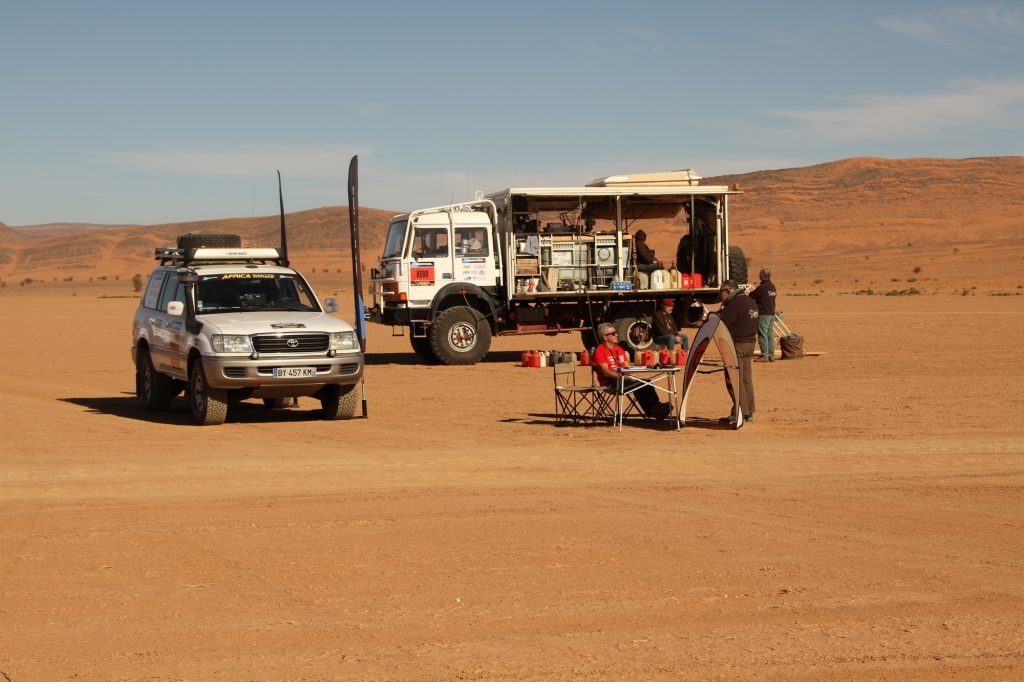
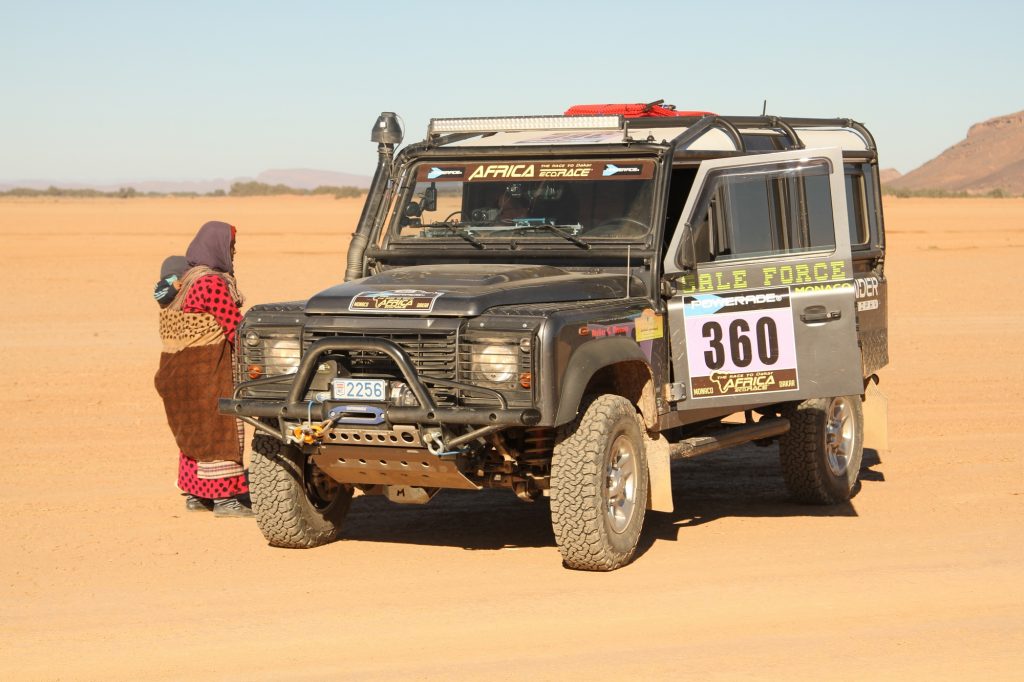
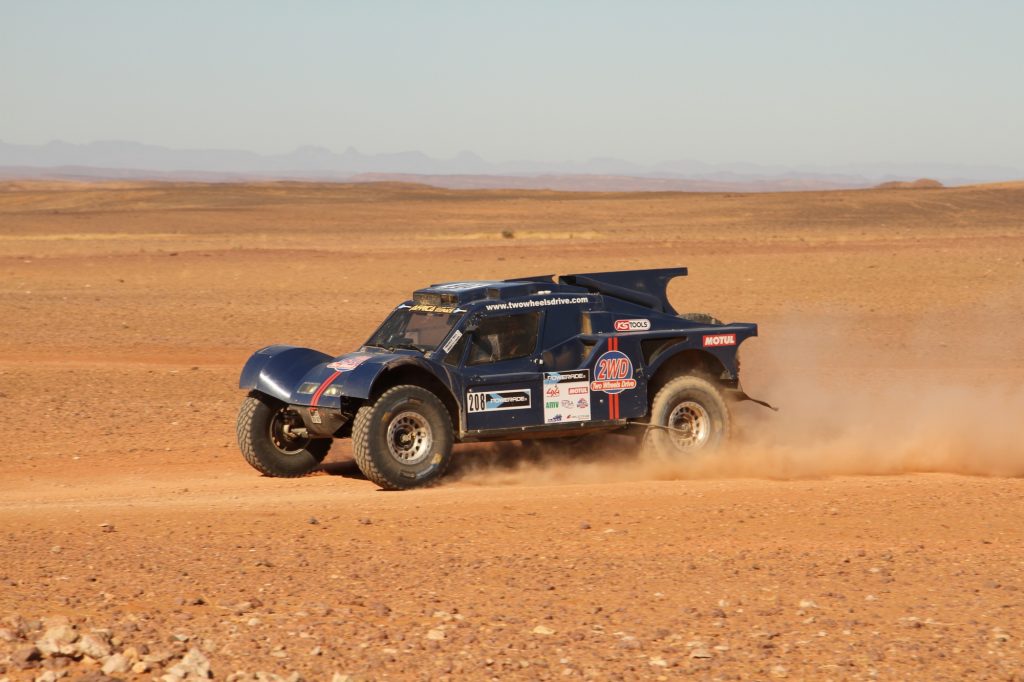
Finally we drove another 120km, mostly off road, before arriving at bivouac 2 at about 4pm. We took the opportunity to explore the bivouac while we still had daylight. I would say it covered the space of about 4 football fields. There were well over 100 non race vehicles including service trucks, media cars and medical cars. We also found 3 helicopters, 4 light airplanes, several catering trucks, pop up toilets and showers. It was amazing to think that in 24 hours this would be empty desert again.
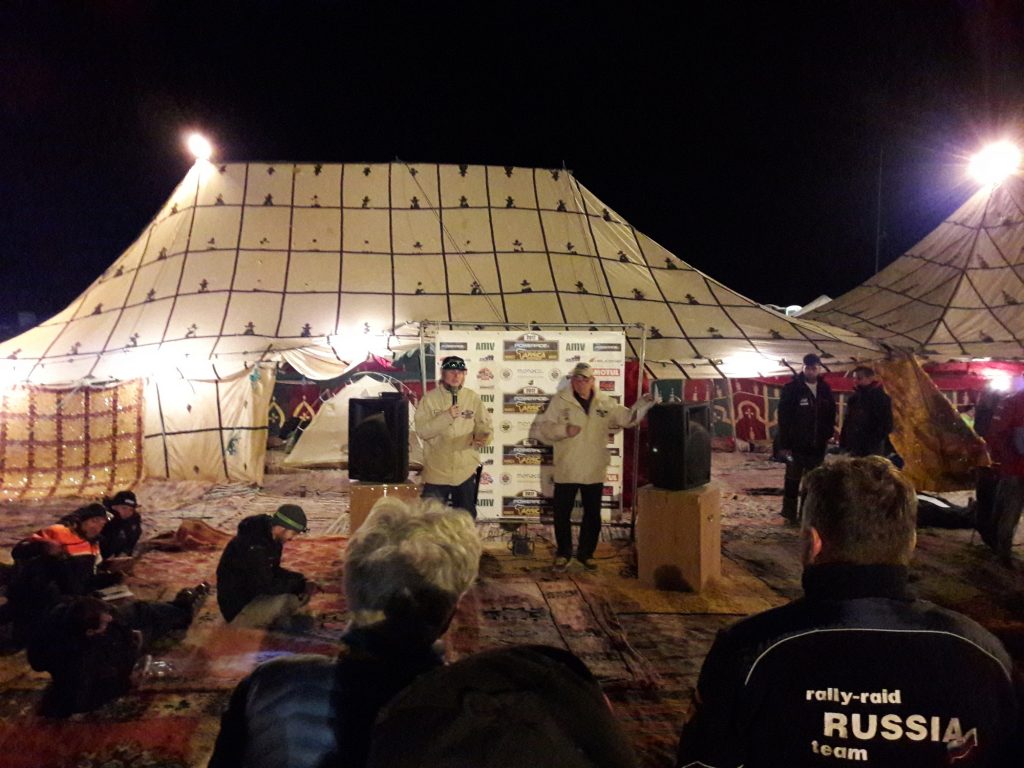
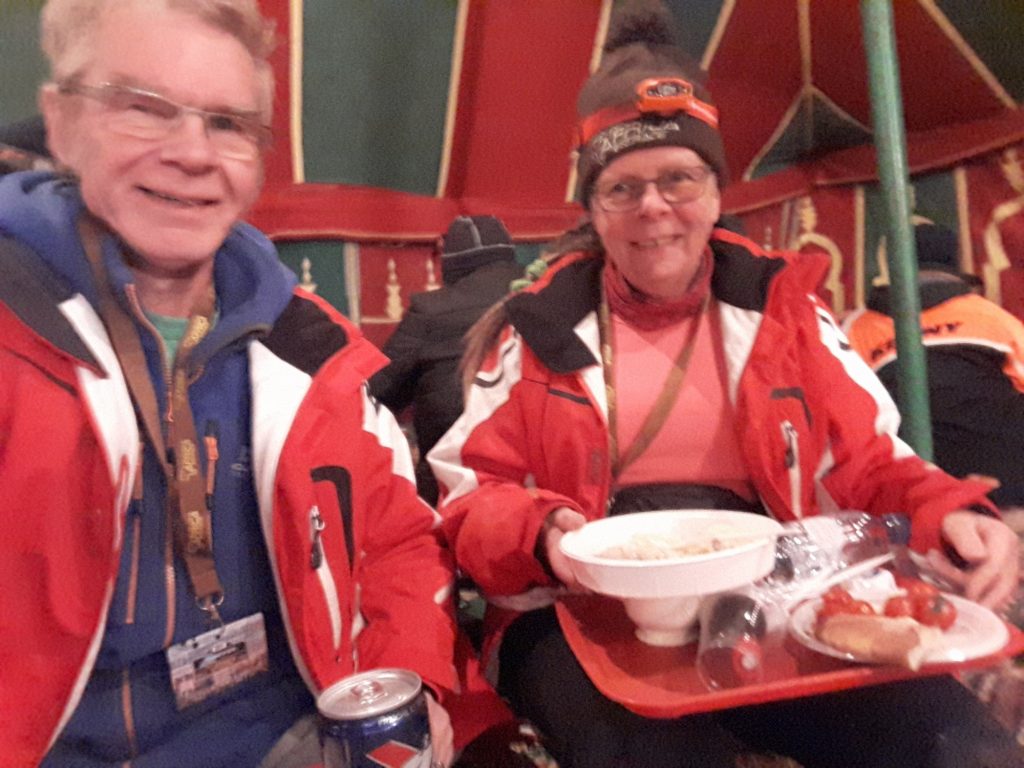
Day 5: Morocco – Stage 3
Day 5 was over 500km of mostly off road driving on sandy tracks and river beds. Part of the route passed through the epic dunes at Erg Chigaga. Our trip around the Erg included the very first serious use of our winch when we had to recover a fellow RAID car stuck crossing soft sand. After the off-roading we made a very civilised stop for coffee and cakes at Tata with some new friends. It turned out this was to be our one and only stop that resembled anything vaguely normal. Bivouac 3 was about 250km south of Agadir not far from the border with Western Sahara.
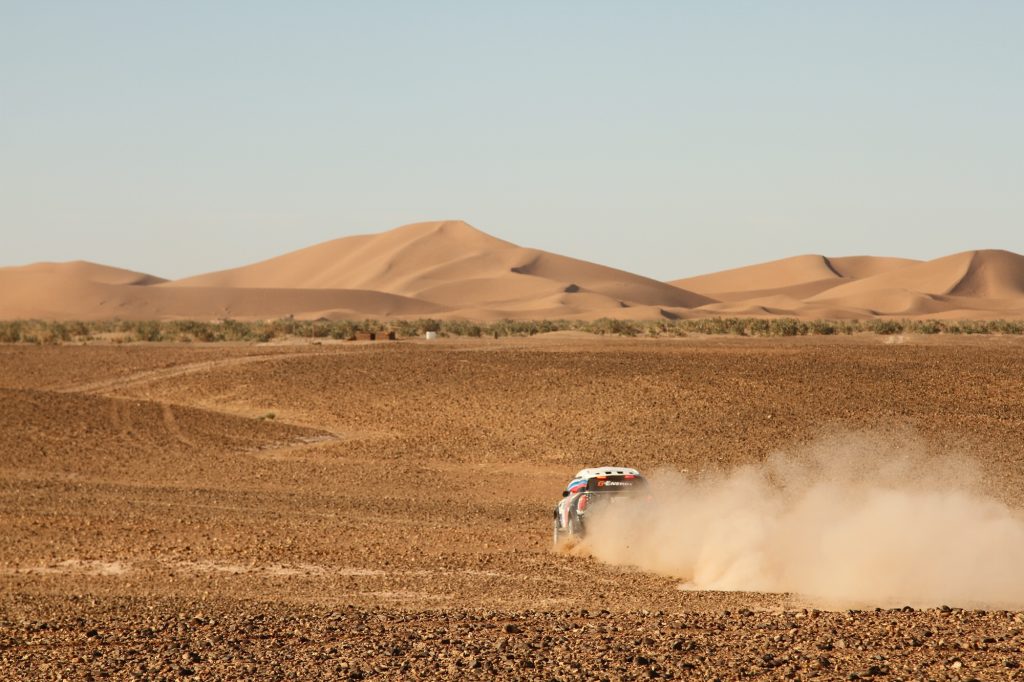
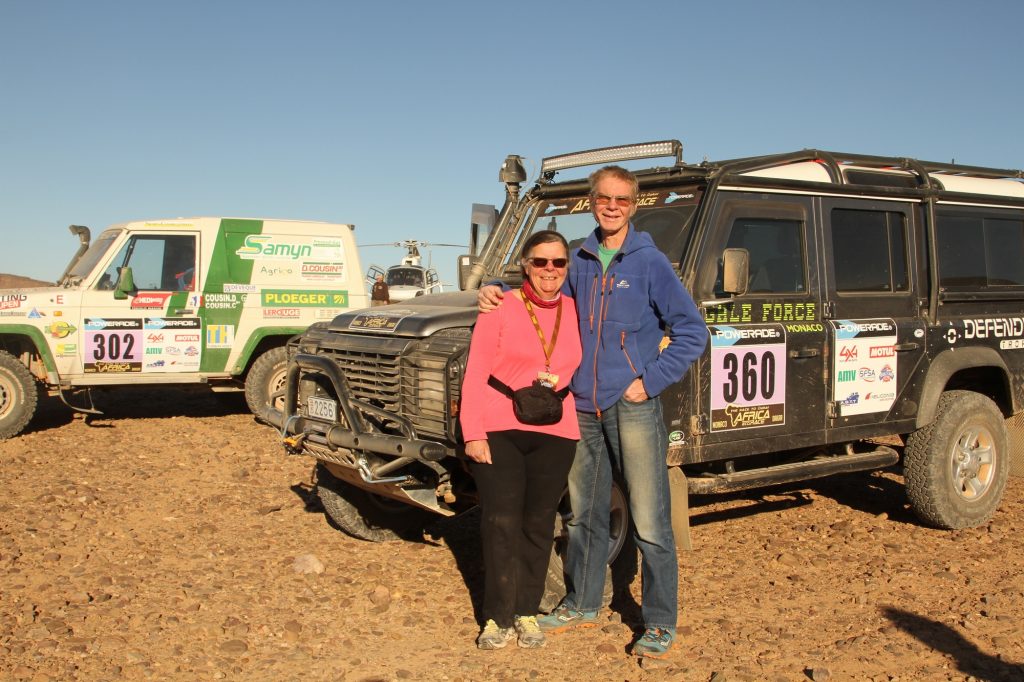
Day 6: Morocco – Stage 4
Day 6 was mostly road to Guelmin then south through Tantan and into the disputed territory of Western Sahara. We covered about 450km split between road, desert and mountain. The highlight of the day was spending time at one of the stages check points seeing the racers come in for their passage stamps. Bivouac 4 was just a little further south than the Canary Islands.
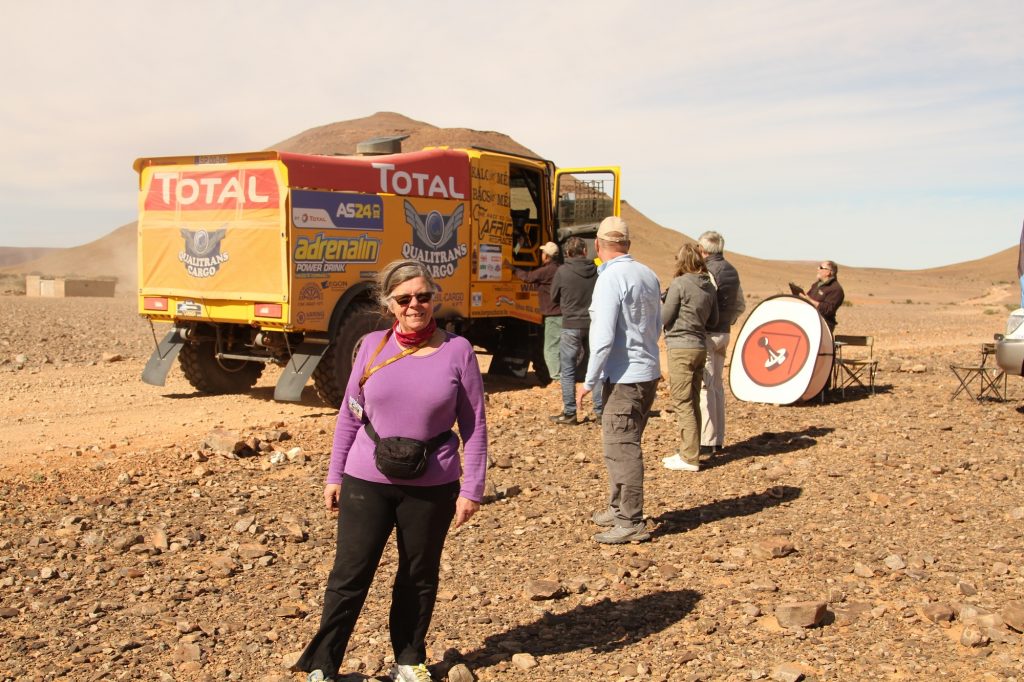
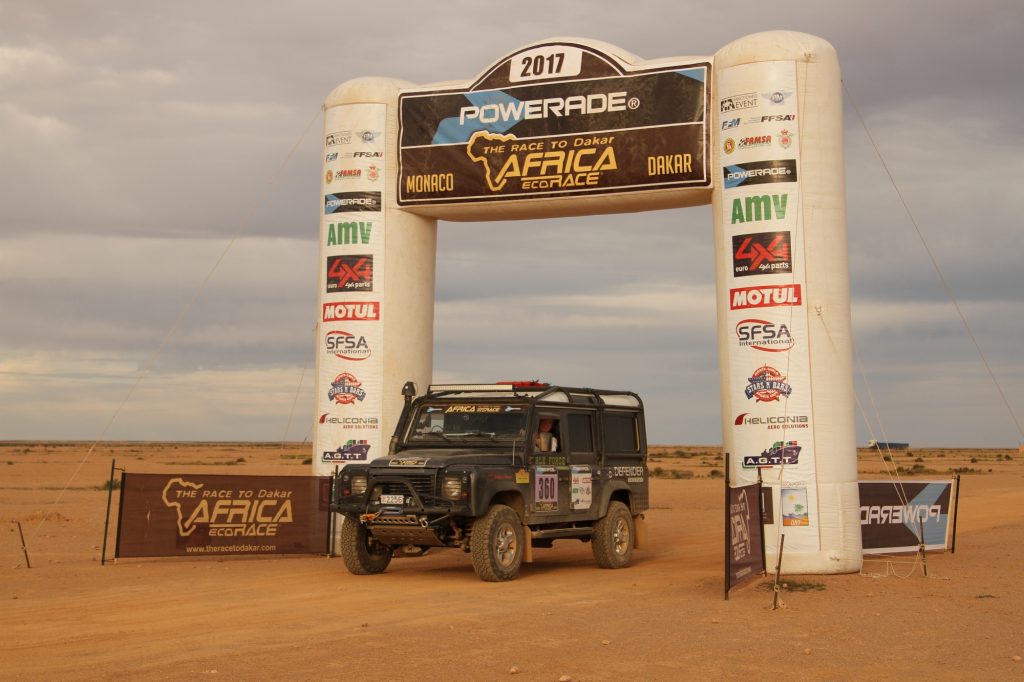
Day 7: Western Sahara – Stage 5
For us, the RAID, day 7 was a massive 900km of road. This included several attempts to cross the confusing city of El-Aaiun followed by a long drive on the coast road to the wind surfers’ paradise of Dakhla and a bivouac on the beach. Fantastic scenery and very easy driving. The racers took a very different off road route with 460km of stage and 240km of road.
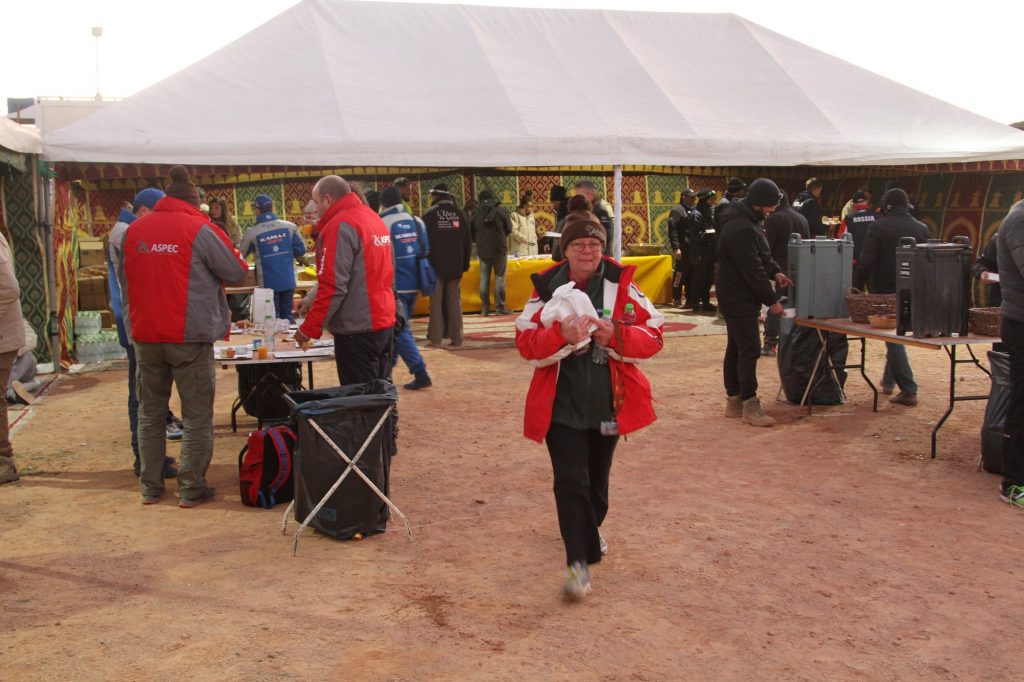
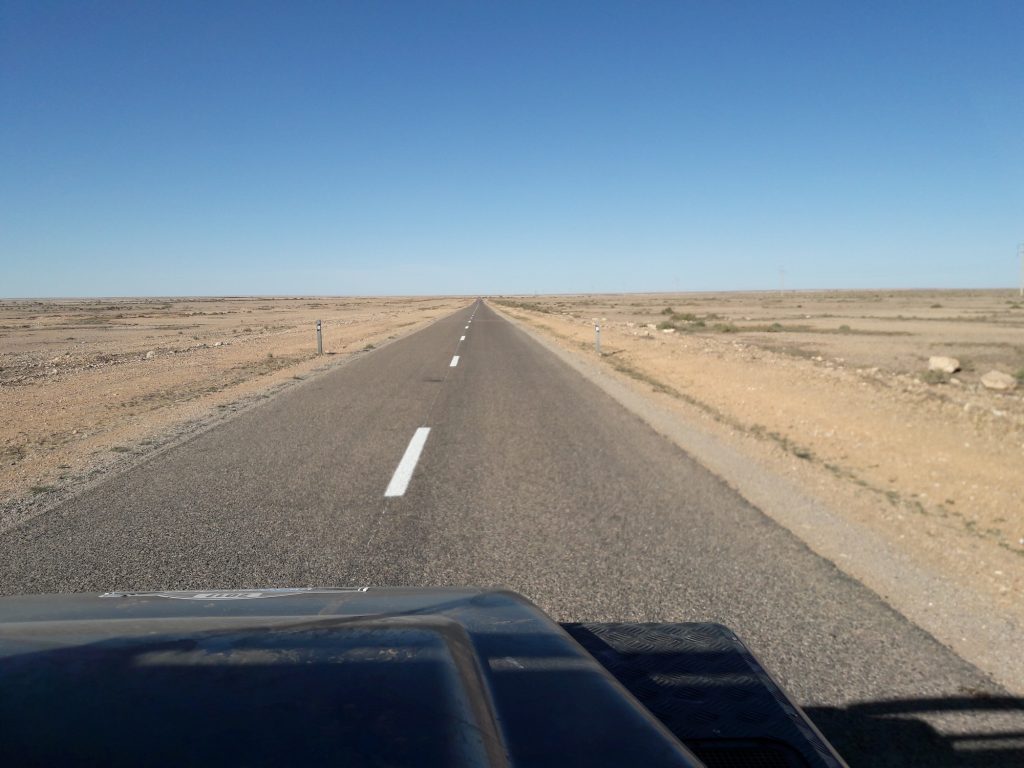
Day 8: Western Sahara – Rest Day
Day 8 was a rest day on the Dakhla beach less than 100m from the waves of the Atlantic. We swam a little, jogged a little and walked around the area. I took the time to change the air filter and clean sand out of the car. I had to change the sensor head on our rally computer as there was only half of it left! Many people drove the 6km into Dakhla city itself to visit some of the well known restaurants there.
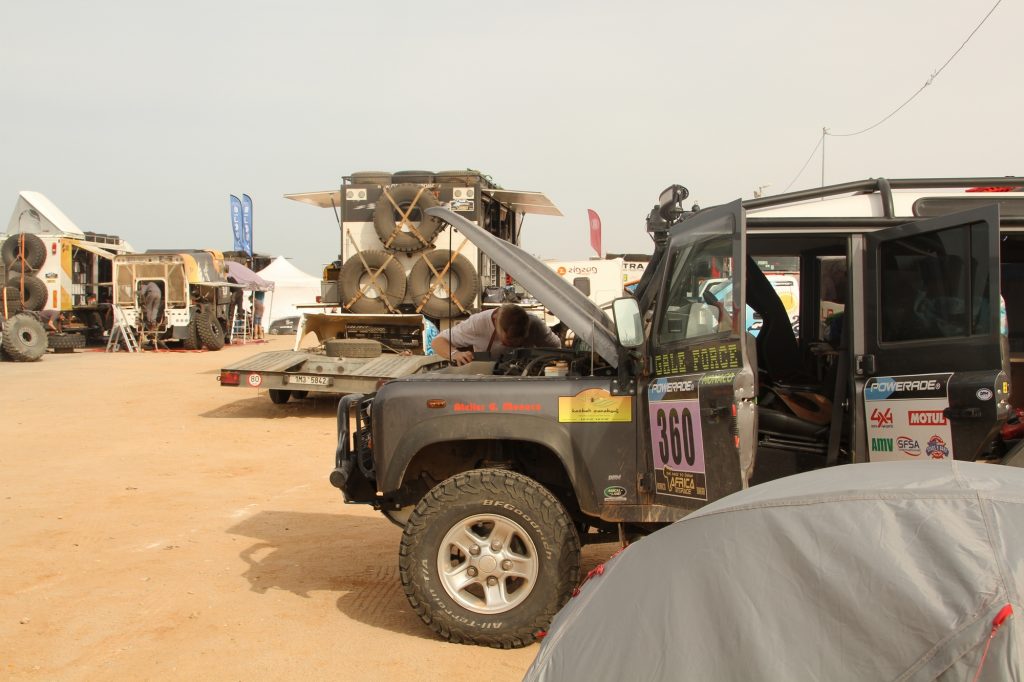
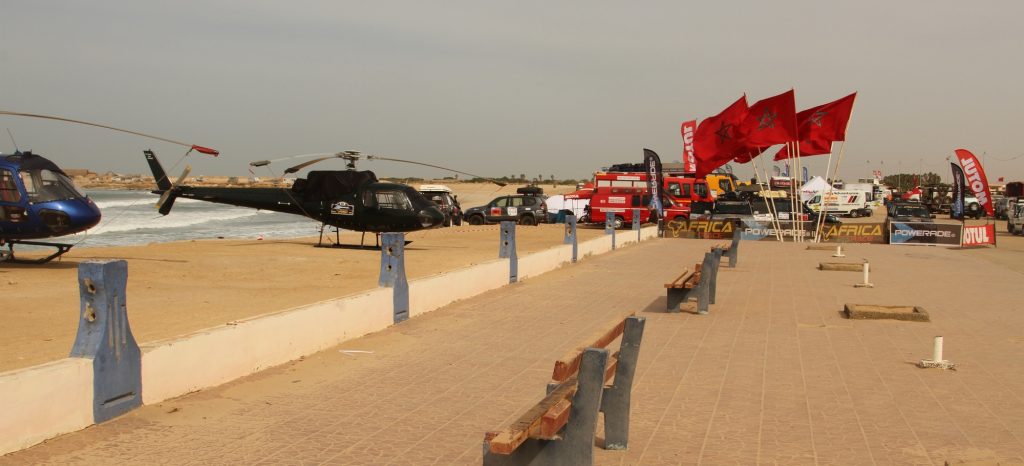
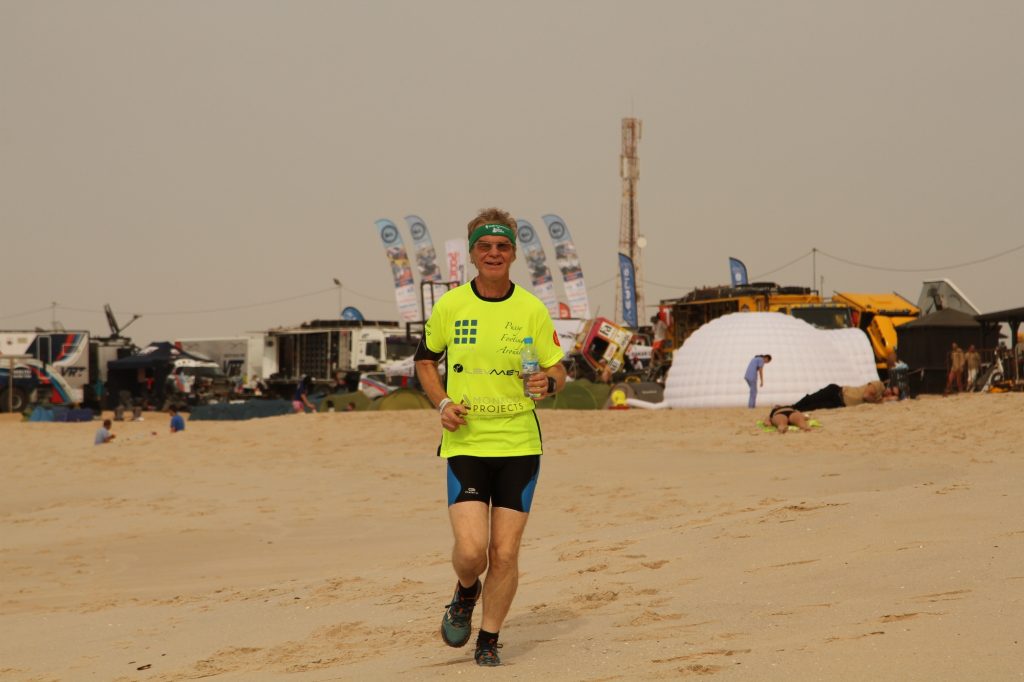
Day 9: Mauritania – Stage 6
The nice relaxing day in the sun turned out to have a sting in its tail. Dakhla is 300km north of the border with Mauritania. Our RAID party had to be at the border before 8am so we could beat the queues at customs and make it on to the next race stage before the racers arrived. Some went in the evening of the rest day then wild camped near the border. A few of us felt more comfortable/secure staying at the bivouac, breakfasting at 3am and heading south at 4am. This all went to plan and we took our place in the border queue well before the deadline. We did however have a close call on the way down. We were zipping along a good straight road at 100kph with all the lights blazing when suddenly in the distance we saw a group of camels sitting on the road. Luckily we had enough time to slow down and avoid them.
Crossing the border was itself quite an adventure as there is a considerable rocky no-mans land between the two countries patrolled by the UN. Amazingly there are all sorts of old stateless vehicules abandoned between the two countries. We continued about 90km on road into Mauritania before taking to the desert again. After about 190km of off road and race watching we rejoined the tarmac for a final 200km drive to bivouac 6, near the coast 90km north of Nouakchott. Our total drive that day was almost 900km.
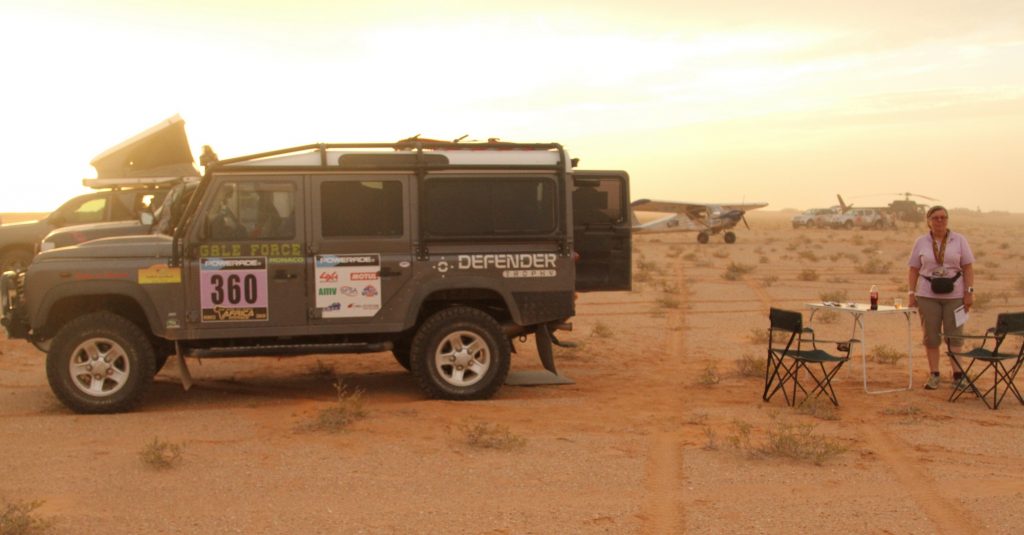
Day 10: Mauritania – Stage 7
Day 10 was a little unusual as the race stage was a 400km loop starting and ending at the current bivouac. Rather than follow the racers around the RAID party took a drive north along a 50km section of Atlantic beach. A media team followed us for some filming as they were highlighting the RAID on their nightly Eurosport broadcast. Our segment was finally shown in the Stage 11 show and it included an interview with Penny, my wife. She appears about 5 minutes into the YouTube below. She was speaking French and in this one has been translated into English. You can see the full French version by clicking HERE.
While sitting on the beach drinking coffee a small fishing canoe type boat came past. Some of our group called it over and purchased fish for an evening barbecue. Fresh fish indeed. We followed the beach to the village of Nouamghar then rejoined the road for 150km of tarmac back to the bivouac.
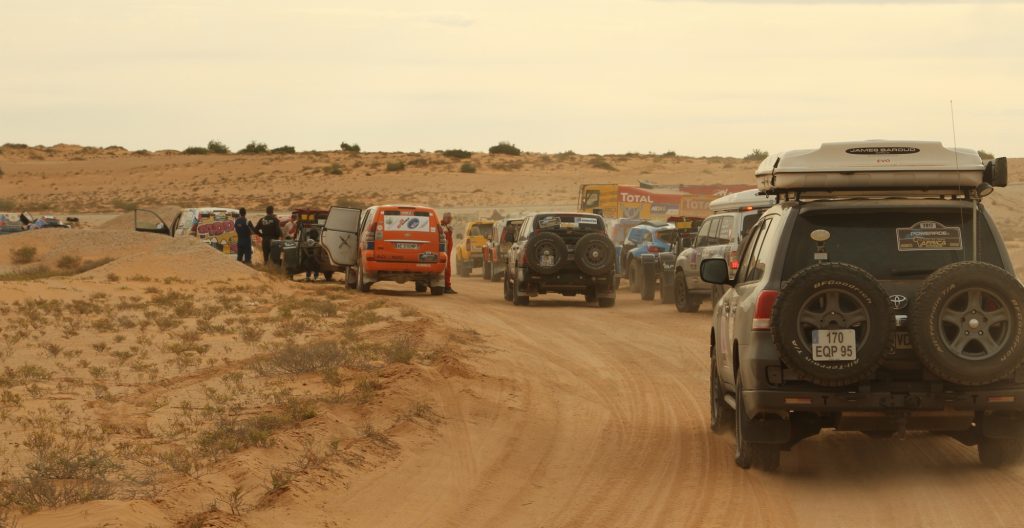
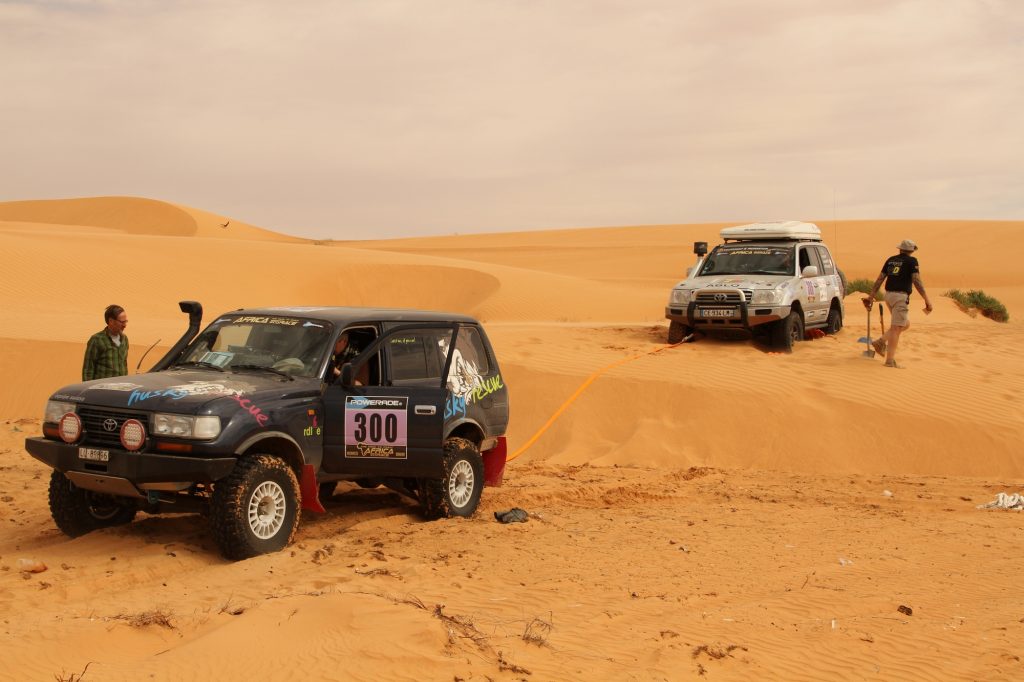
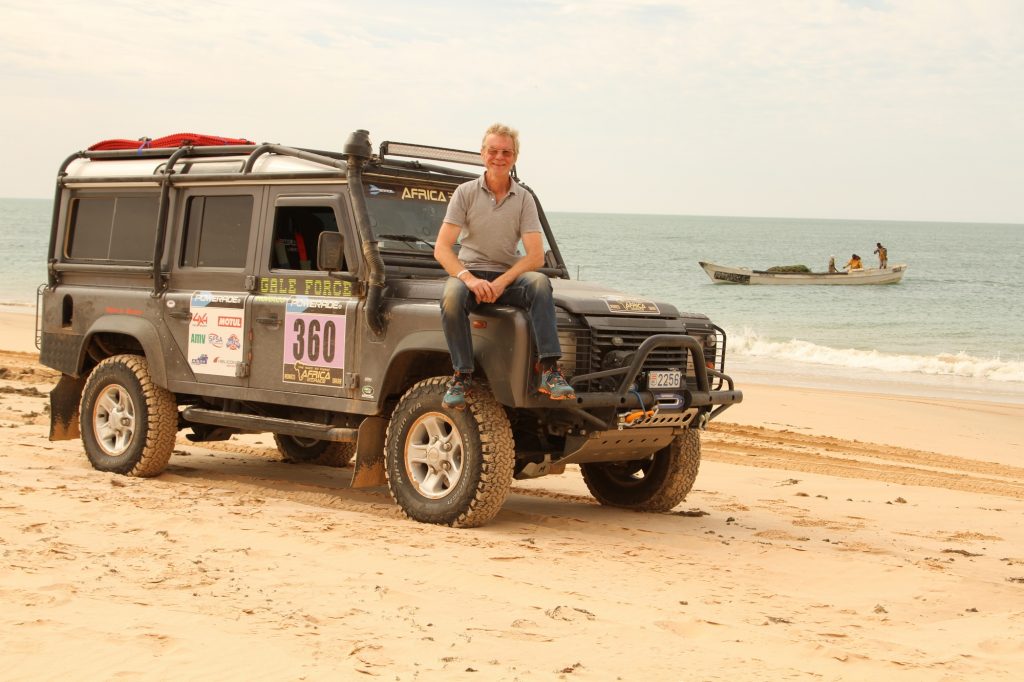
Driving up the beach we were met with a really odd sight. Loads of cars coming the other way. It was so weird I made a video from the Dashcam footage.
Day 11: Mauritania – Stage 8
Day 11 took us east into the real dunes of Mauritania. For me this was a bitter sweet day as I had been really looking forward to seeing the really big dunes. Unfortunately I picked up some sort of tummy bug and half way through the route became too sick to continue. Penny took over with the driving and along with another RAIDer that did not want to do the big dunes we drove around them and joined the nearest road. It ended up being a 600km day most of which I slept through. I felt a lot better as we arrived at bivouac 7. We were about 30km north of Atar and 400km east of the Mauritanian coast.
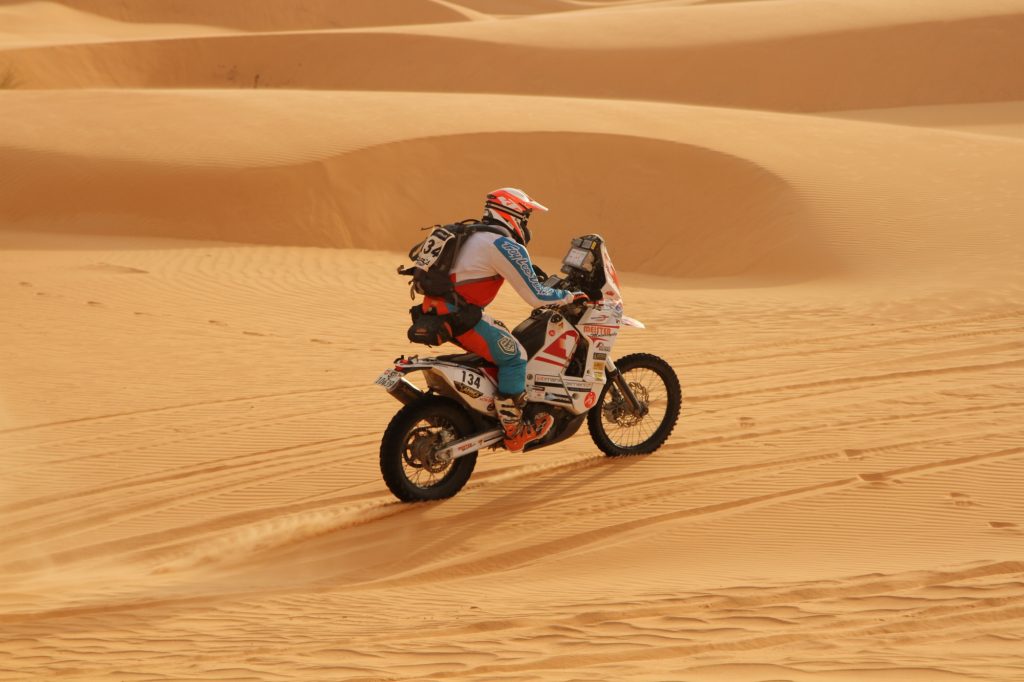
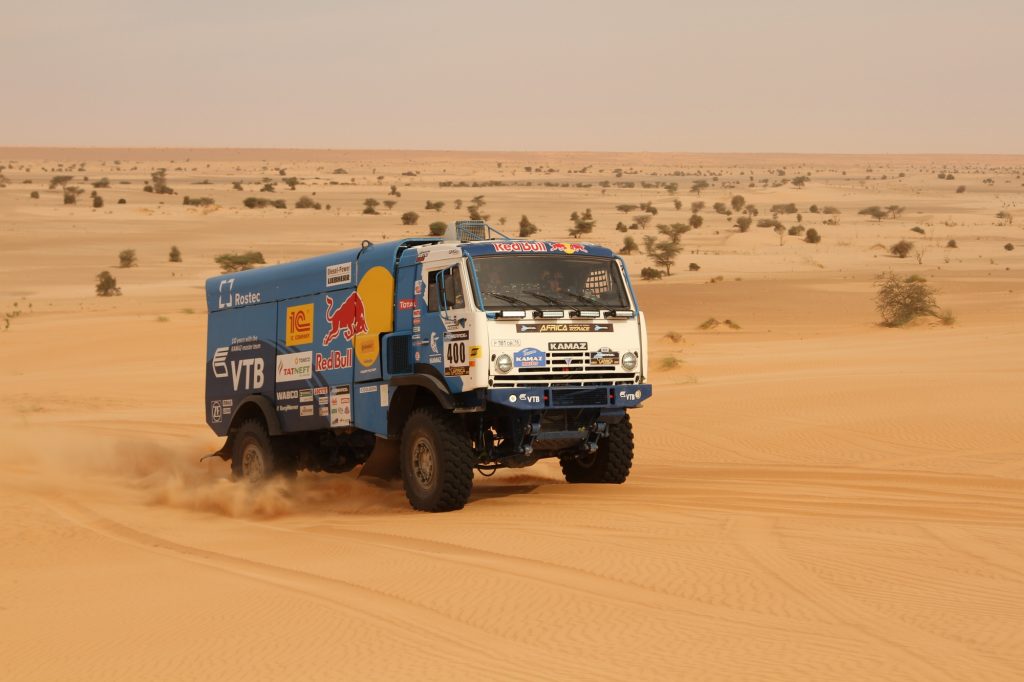
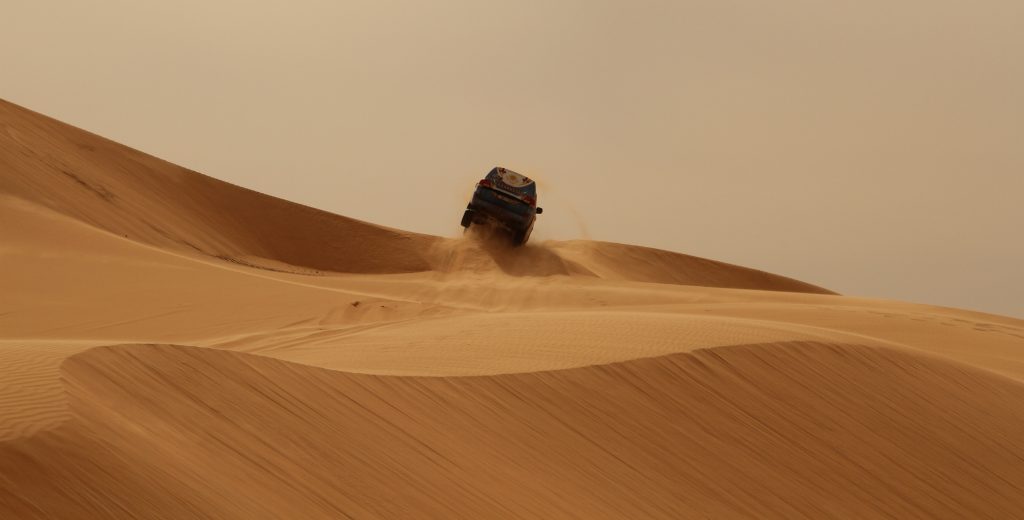
Day 12: Mauritania – Stage 9
Day 12 was just 240km of driving back along the road we had traveled on day 9 to a bivouac near Akjoujt. The 400km race stage crossed the road at one point so our RAID party gathered there to watch as the racers went through.
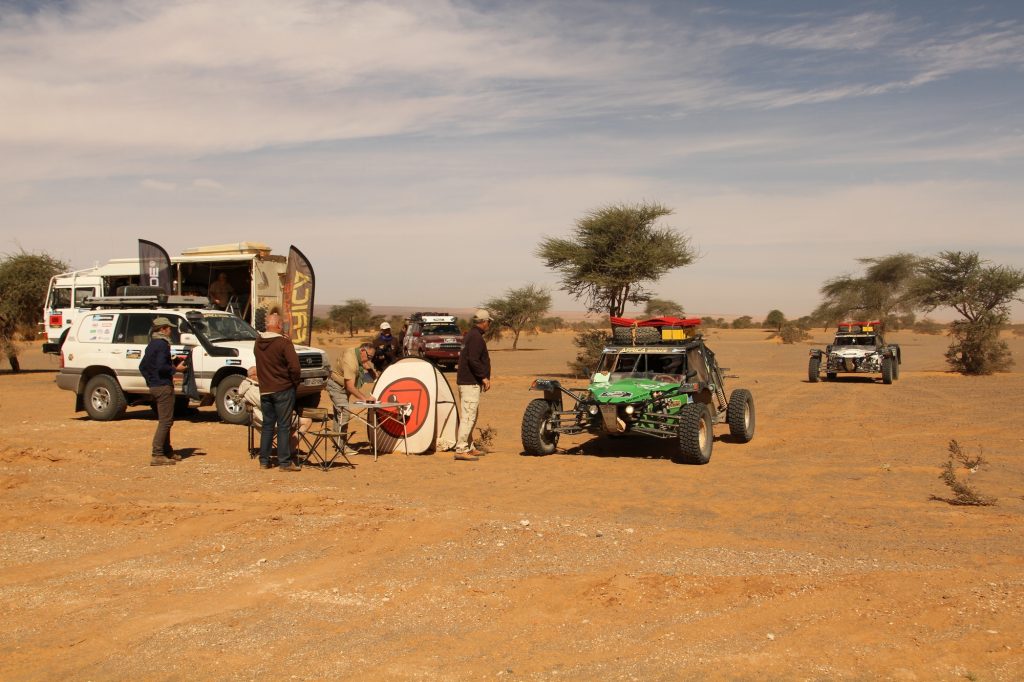
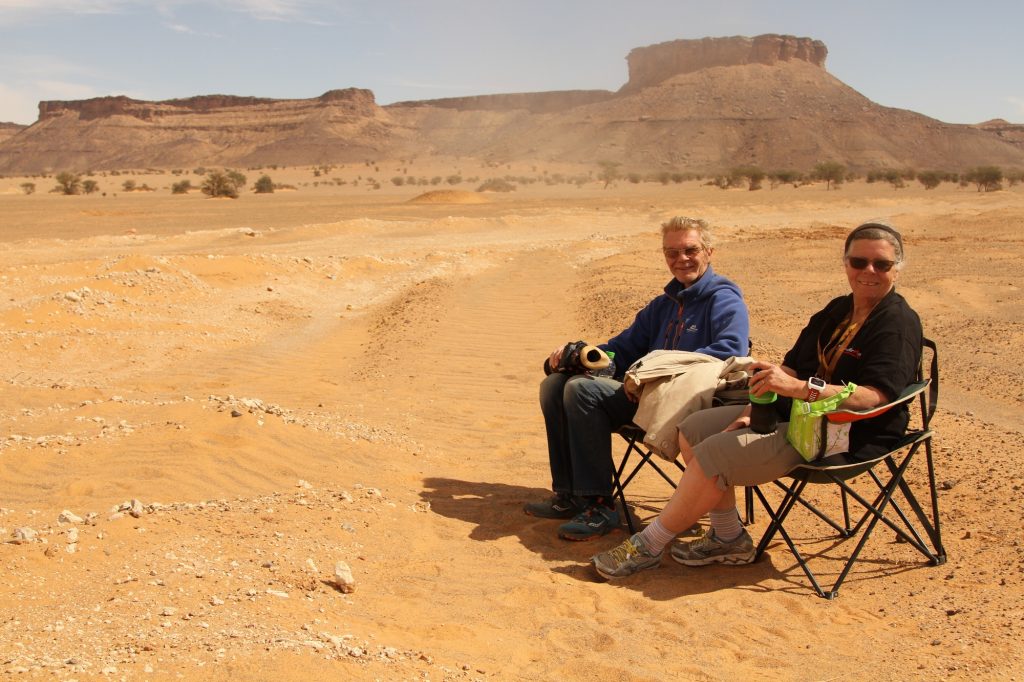
Day 13: Mauritania – Stage 10
The 450km race stage of day 13 was once again a loop back to the same bivouac. The RAID party did the first 150km of the stage before cutting back onto the road and driving 150km back to the bivouac. This stage did include plenty of dunes and soft sandy sections which were a lot of fun. As this was a loop our son Chris excused himself from his organisational duties and took up the role of co-driver for the day. Somehow he ended up driving for part of the stage. I took over again once he had buried the Defender up to its front axle in an unexpected section of very soft sand. On the way back we took a detour to see some camels then visited the race stage finish.
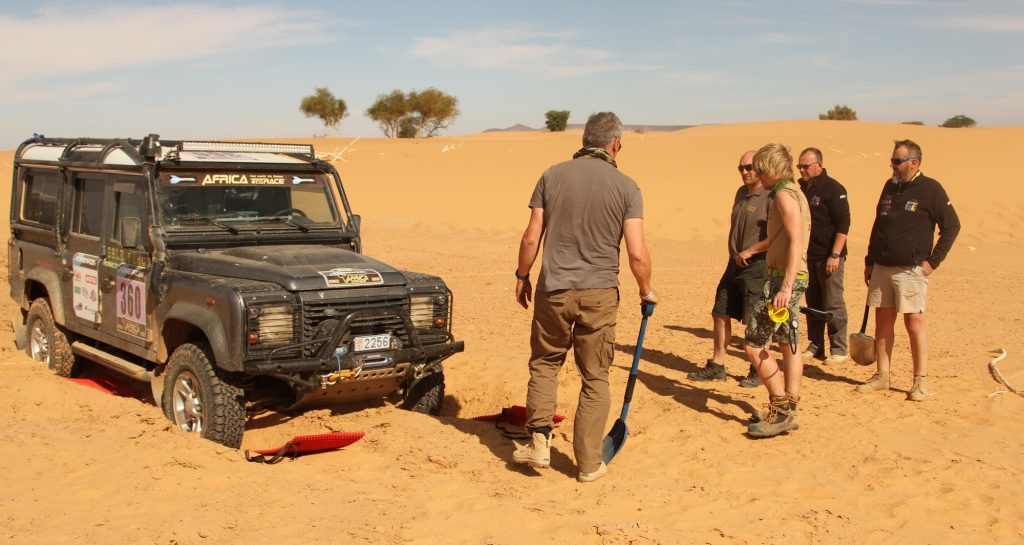
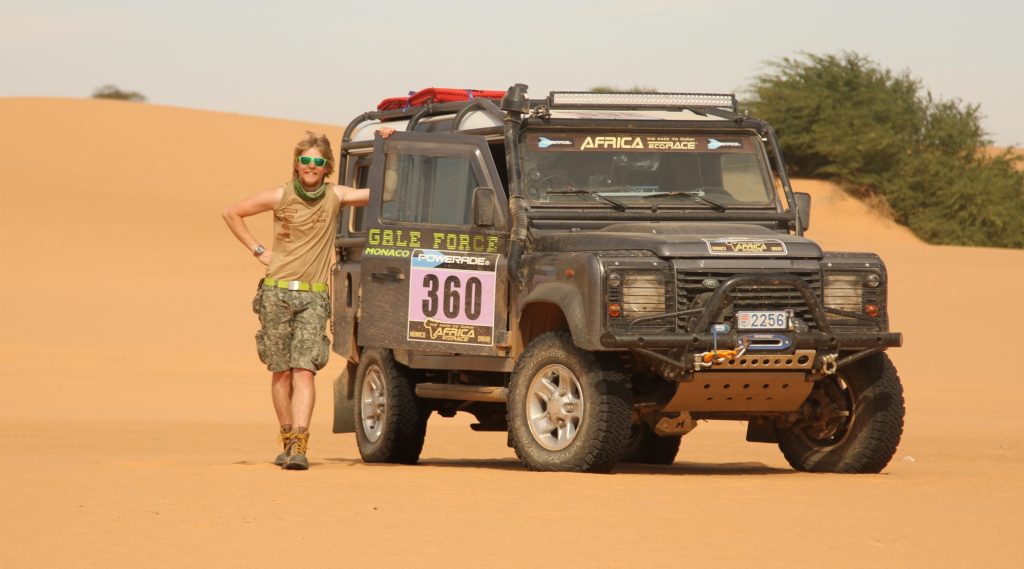
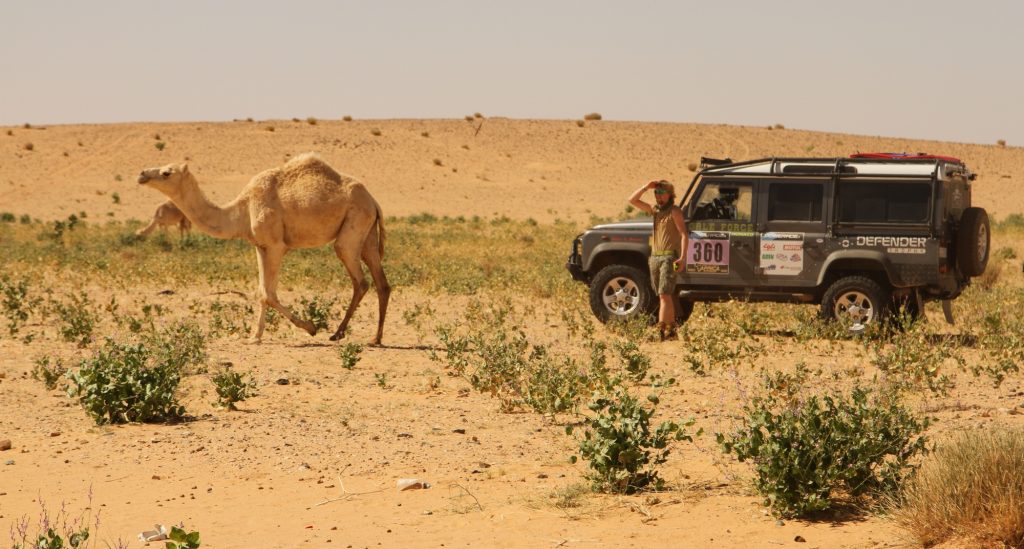
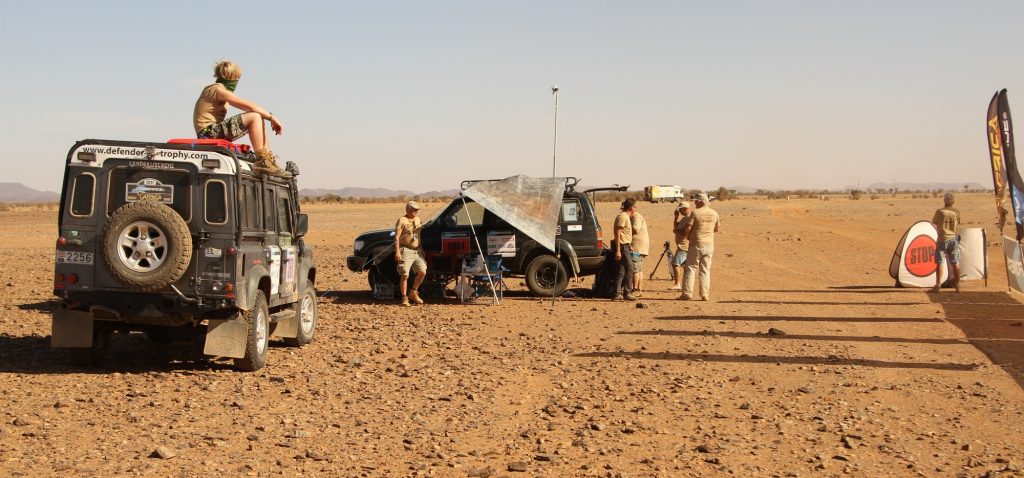
Day 14: Senegal – Stage 11
Day 14 included some of the most amazing driving I have ever done. Basically we did the 210km race stage, on our own, without stopping and as fast as we liked. We crossed dry lakes, sand dunes and very fast sandy tracks sometimes at speeds that would be illegal anywhere in Britain. Amazingly when we stopped I realised that the ground was made up of millions and millions of tiny sea shells.
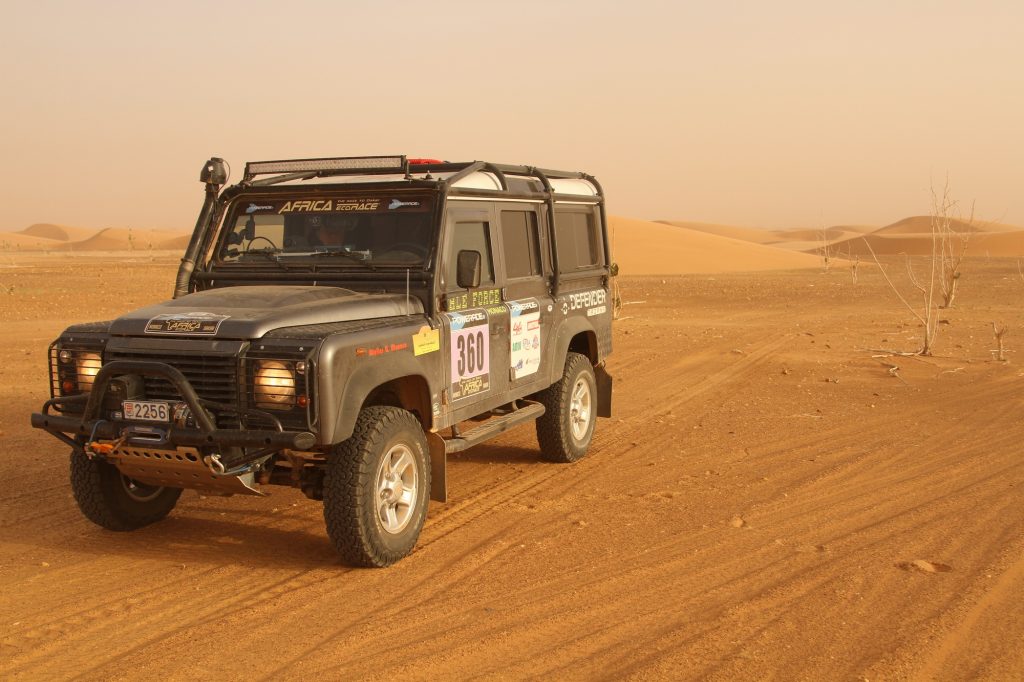
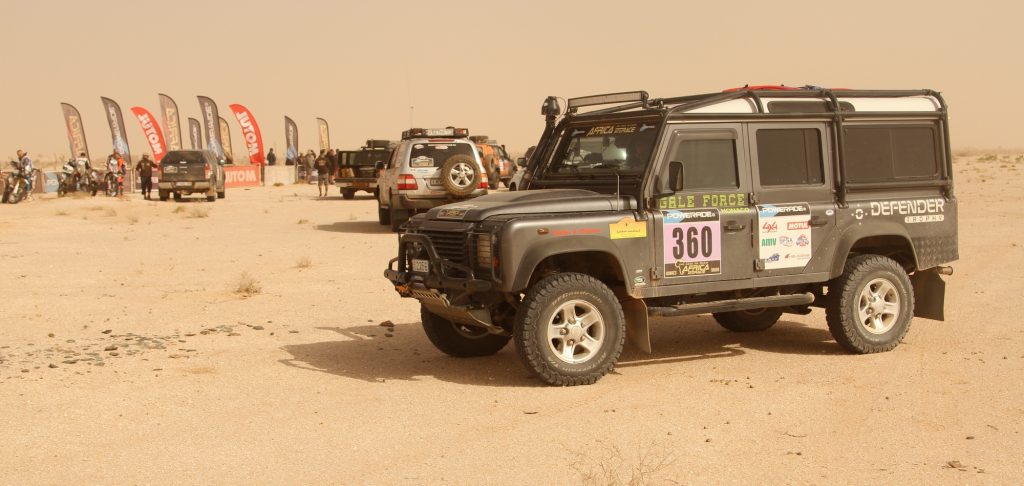
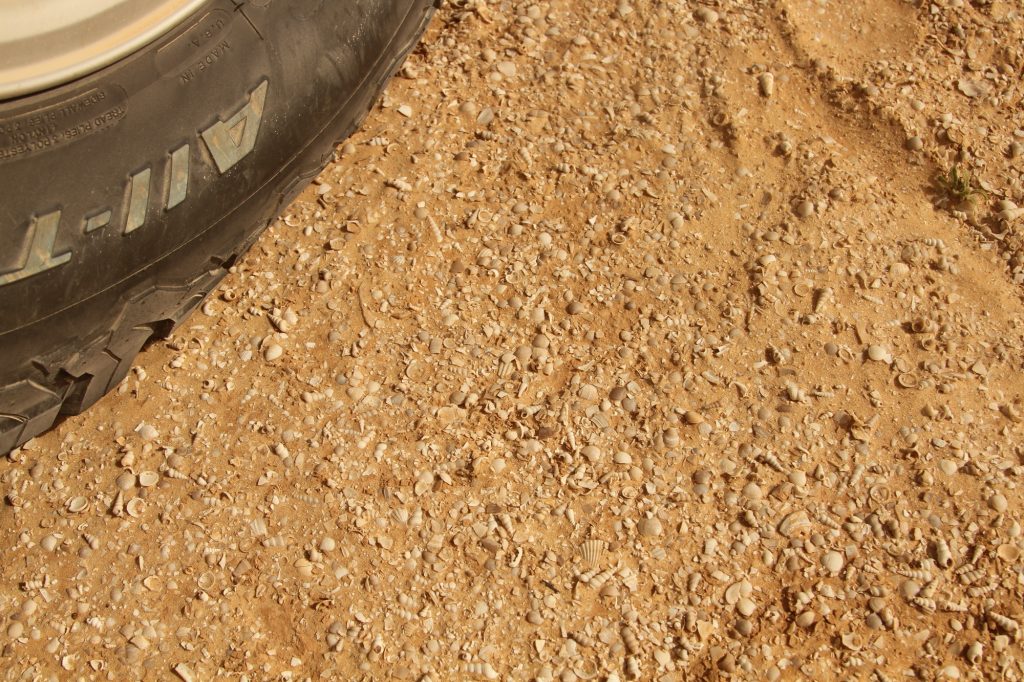
Having got that out of my system we joined the road and drove 80km into Nouakchott. For me this was probably the slow speed highlight of the whole adventure. The cars, the traffic, the driving standard has to be seen to be believed. We entered one roundabout on a two lane road, plus cars driving on the pavement, plus cars driving on the sand next to the pavement (in both directions!). Even the Police were unable to control the flow as cars basically went where ever there was space. Lots of hooting. . . .
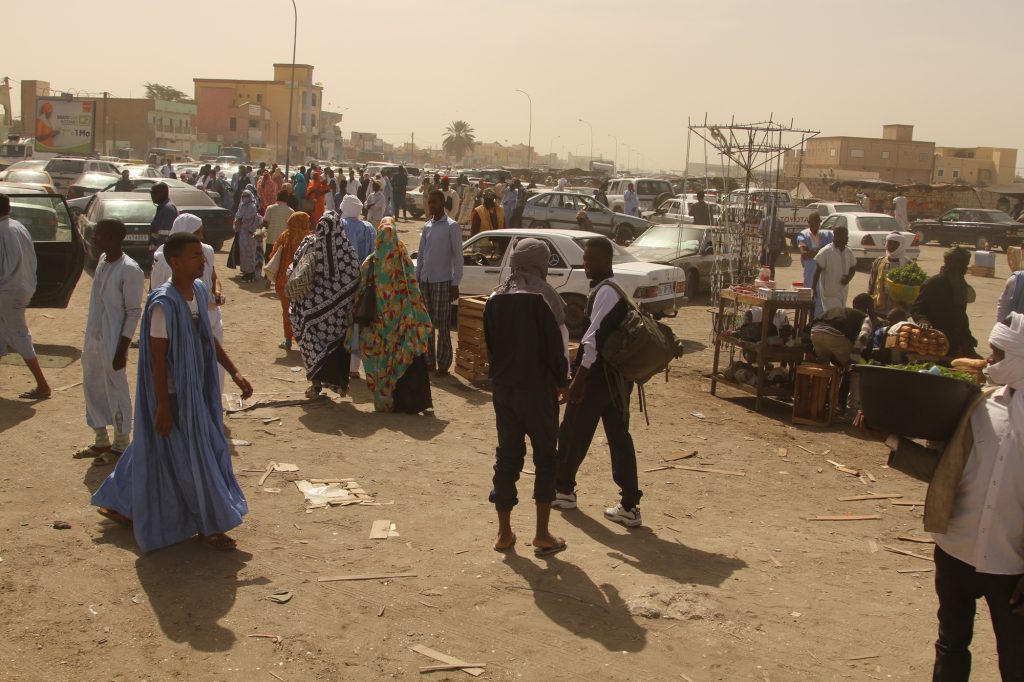
After Nouakchott it was a further 220km of road to the border with Sengal. A little before the border we had our winch going again to rescue one of the medical vehicles that had parked a little too far off the road and sunk into the mud.
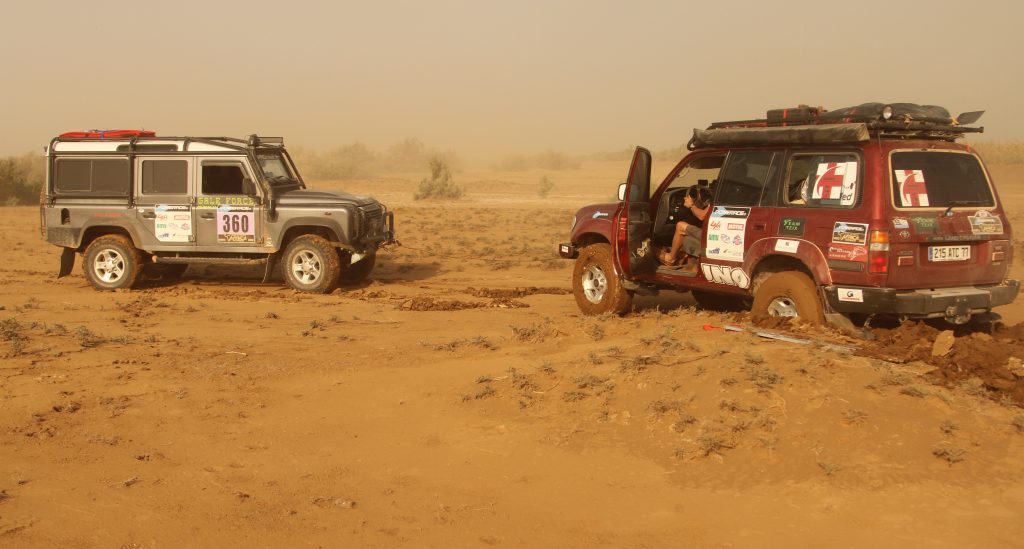
Once over the border it was a simple 20km drive to the final bivouac at the airport of St Louis. Senegal was a real culture shock. We were back in the world of road side advertising and people jogging in sports clothes with headphones on.
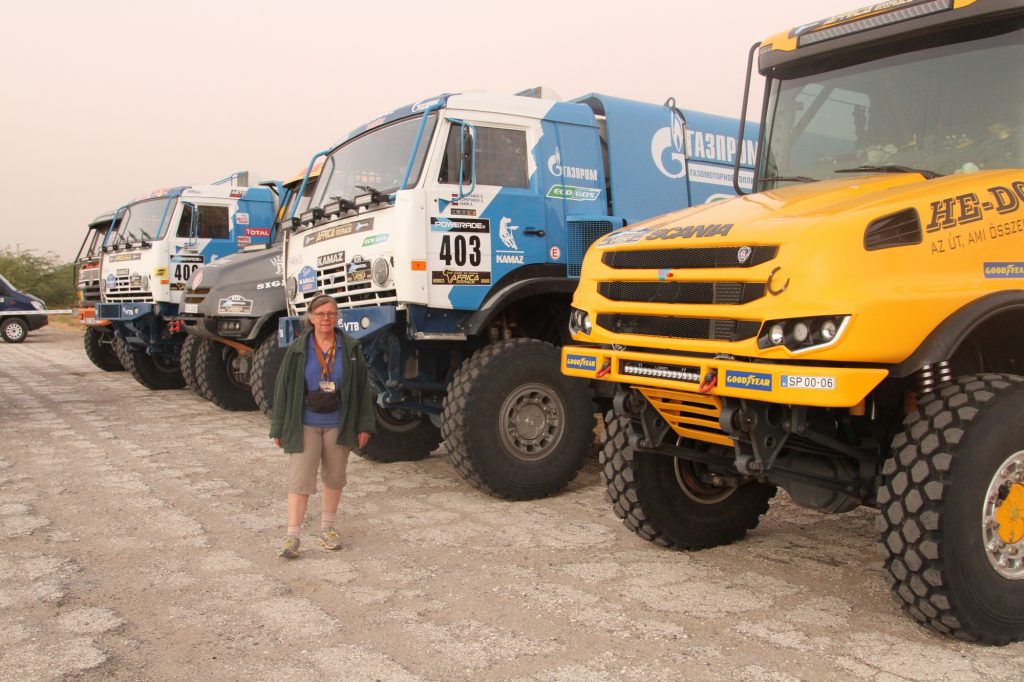
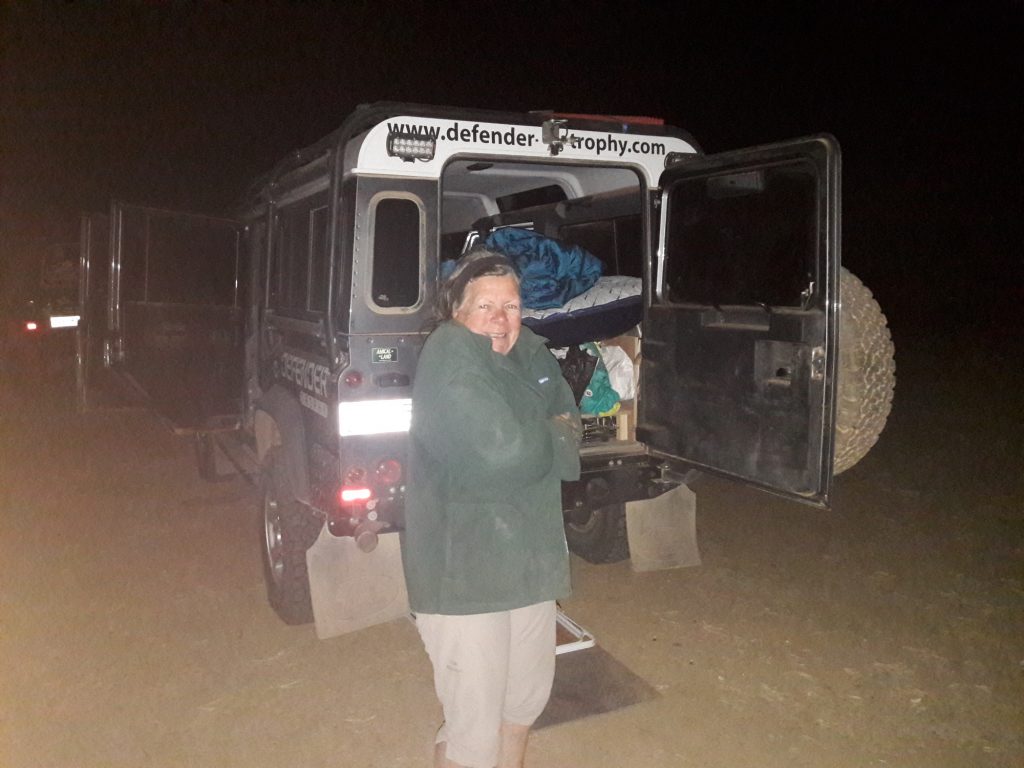
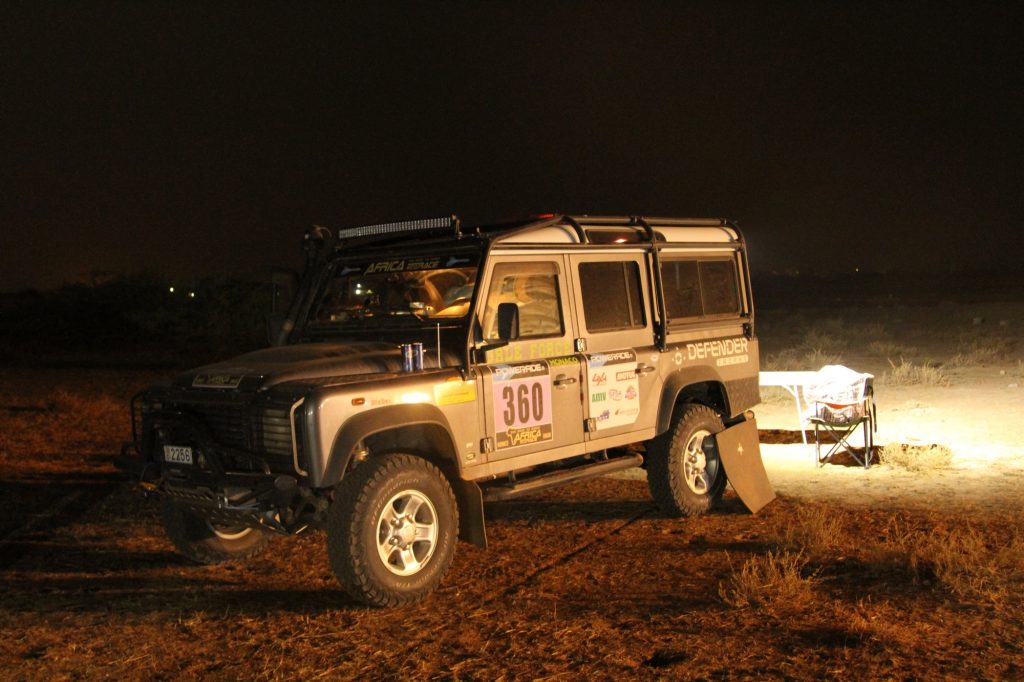
Day 15: Dakar – Stage 12
Day 15 was the final of the rally. We drove just over 230km south on good roads to the beach just north of Dakar. Here all the competitors gathered for a final blast along the beach to the Lake Rose finish 22km away. This stage was very unusual as each category of racers went off together in a side by side. First the bikes, then the cars, then the trucks and finally the RAID. Our standard Defender didn’t fare very well against the high end Toyota Land Cruisers of the other RAIDers which very quickly disappeared into the distance. We still arrived at the Lac Rose finishing area in plenty of time to see the prize giving though.
Slideshow [10]: Senegal and Stage 15
We received our Finishers Medals, posed for the photographers then set off again for the final 40km crawl through the Dakar traffic to the magnificent 5-star King Fahd Palace hotel on the headland west of Dakar. The day ended with everyone attending an excellent multi course meal under the stars by the pool.
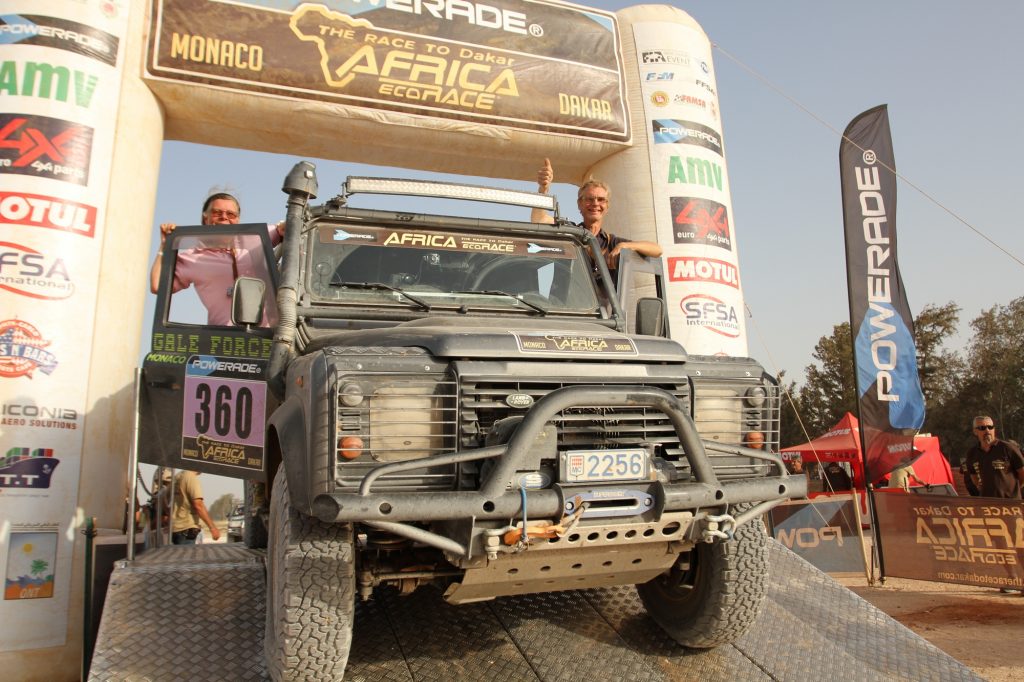
Day 16: Dakar – The End
On Day 16 we left the hotel in managed convoys to cross Dakar to the ferry port. From here all the Eco Race vehicles go onto a ship which will arrive in Marseilles in about 2 weeks time.
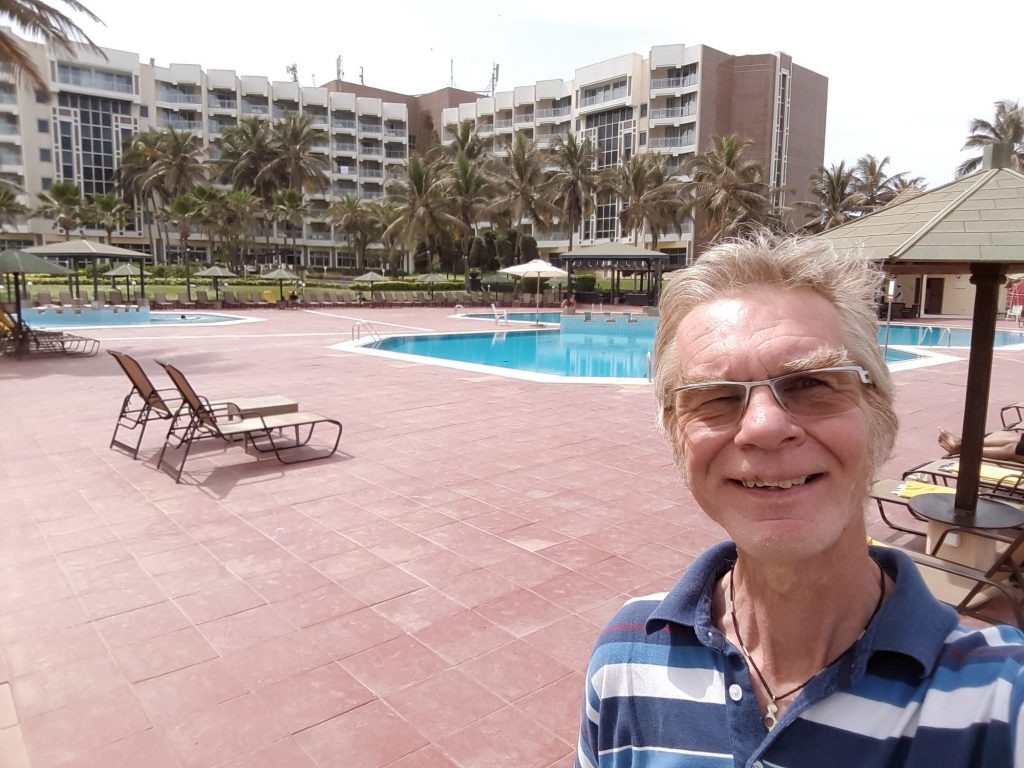
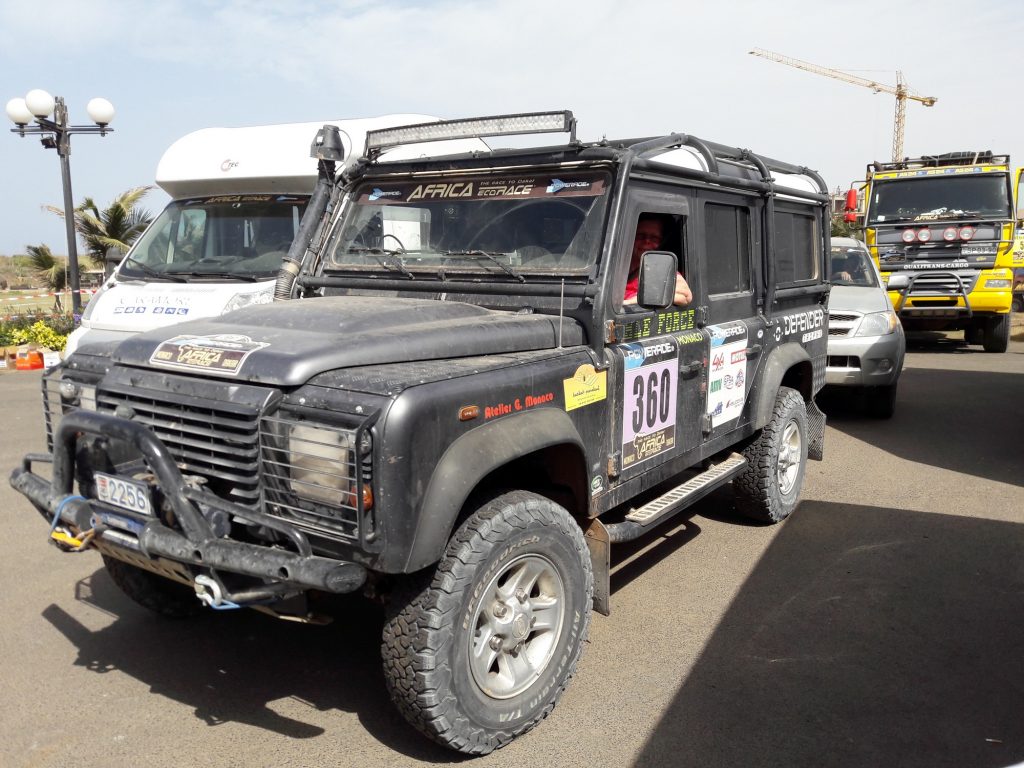
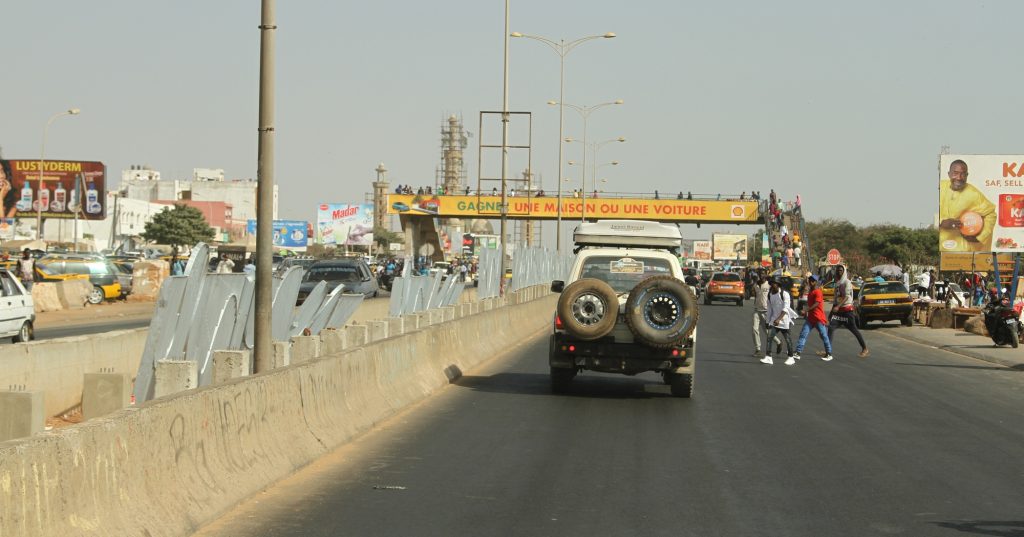
And Then
My wife and I stayed in Dakar for 5 more days to tourist around before flying home. Dakar was a fascinating place. We found ourselves a local guide, Dam, who took us to see some amazing places in the city. I did a few early morning training runs as I was technically still training for the Marathon des Sables in a couple of months. One day we took a taxi south to go see the amazing Reserve de Bandia wildlife park.
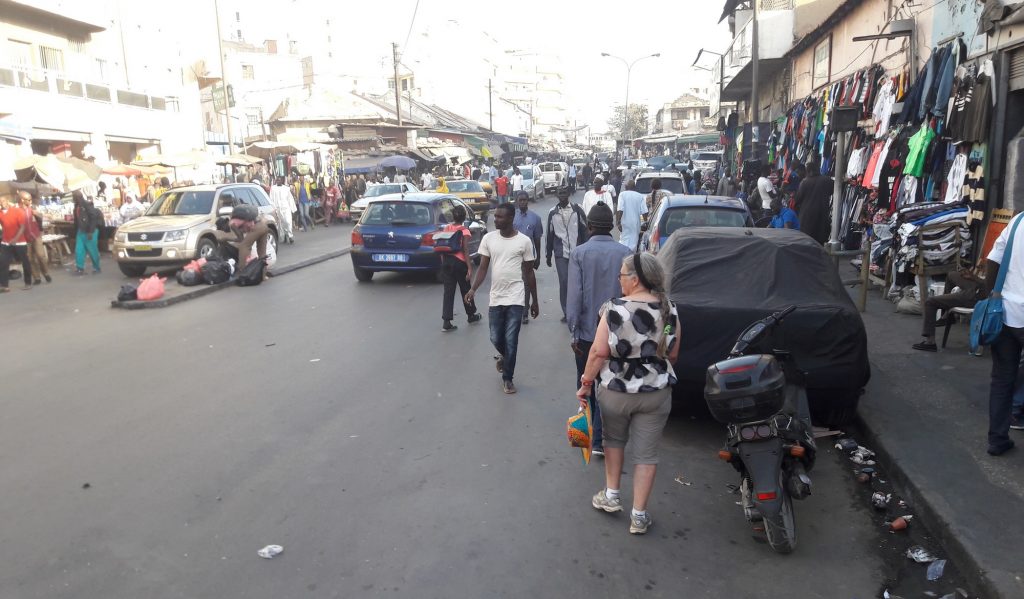
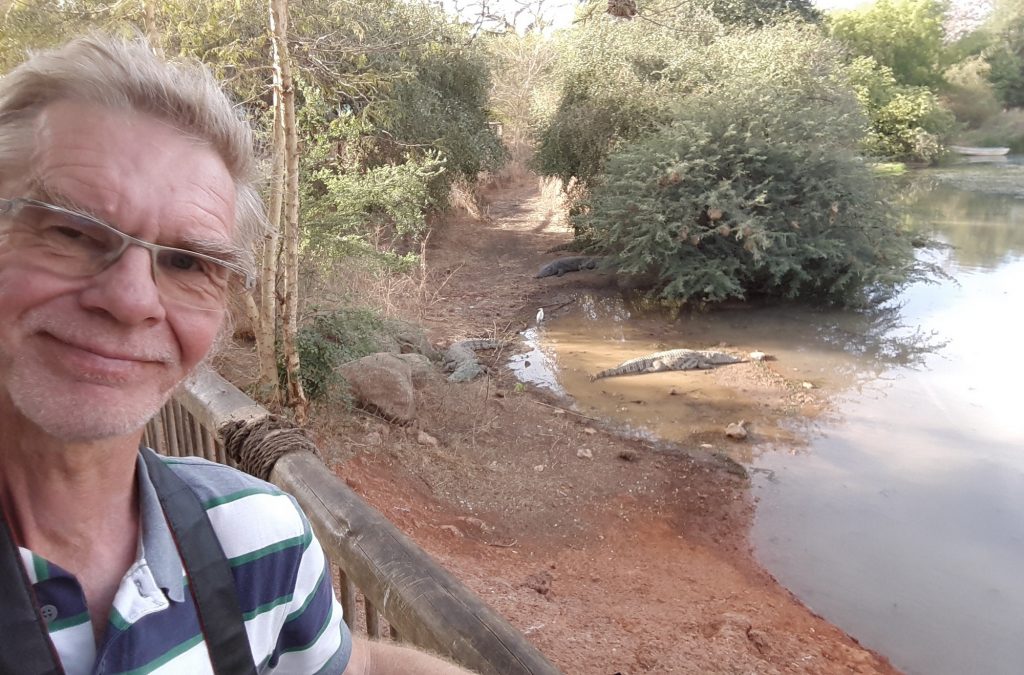
And Finally
This adventure was the start of my action packed 60th birthday year. A few months later we were back in Morocco with the Defender for 5 weeks. First we drove in the Carta Rally GPS challenge, then I competed in the 7 day 250km Marathon des Sables foot race, then we spent a further 10 days with a Defender tour group driving in the desert. In the summer I did the Nice Ironman triathlon. In the Autumn we were in the UK for me to compete in the Great North Run half marathon and then my first Fell Race over Dale Head in the Lake District. In November I did my 10th Nice Cannes marathon then in December I was back in the desert. This time I was in the south of Peru for my second 7 day 250km Marathon des Sables foot race. Quite a year.
Driving the Africa Eco Race RAID
For us the Africa Eco Race RAID was one big adventure that I would recommend to anyone who loves off road and is not too bothered about comfort. In the two weeks we covered over 6,500km, most of which was off road, and passed through some magnificent scenery. The Eco Race security is good both medically and otherwise. All the cars are tracked by satellite and the RAID was managed by a dedicated coordinator. We are living proof that the driving is not too hard. All the food is professionally catered and includes packed lunches each day. However it is a big commitment to do a lot of driving and the toilet/shower facilities are not always as civilized as you may like. In 2017 the basic RAID entry fees included the ferry from France to Morocco, all the food and water on route, the hotel in Dakar and the ferry (car only) back to France. On top of this you have to add driving to, and staying, near Monaco for the start, rental of the obligatory satellite safety systems, your flight back from Dakar and all the fuel. Then finally, two weeks later, you have to organise to collect your car from the Marseilles docks and take it home. It’s a massive adventure and we give it 5 Stars !

